36 Thriving Deer-Resistant Plants for Peace of Mind in Your Garden
Have you spent time and money creating your dream garden, only to discover that deer have eaten your gorgeous flowers overnight? I’ll show you 36 deer-resistant plants that will thrive in your garden and resist the temptation of deer.
From vibrant coneflowers to fragrant lavender, these deer-resistant flowers and plants will add color and texture to your garden and provide peace of mind, knowing your beautiful blooms will be spared.
No plant is absolutely 100% deer-proof. Hungry deer are known to eat almost anything if food is scarce. The heaviest deer browsing occurs from October through February, especially during the difficult winter.
The good news is that many plants are much less palatable to deer. Knowing which plants are NOT the top choice on the deer menu is essential so they’ll walk to the next garden to choose more appetizing choices. They will only select your plants if they’re desperate.
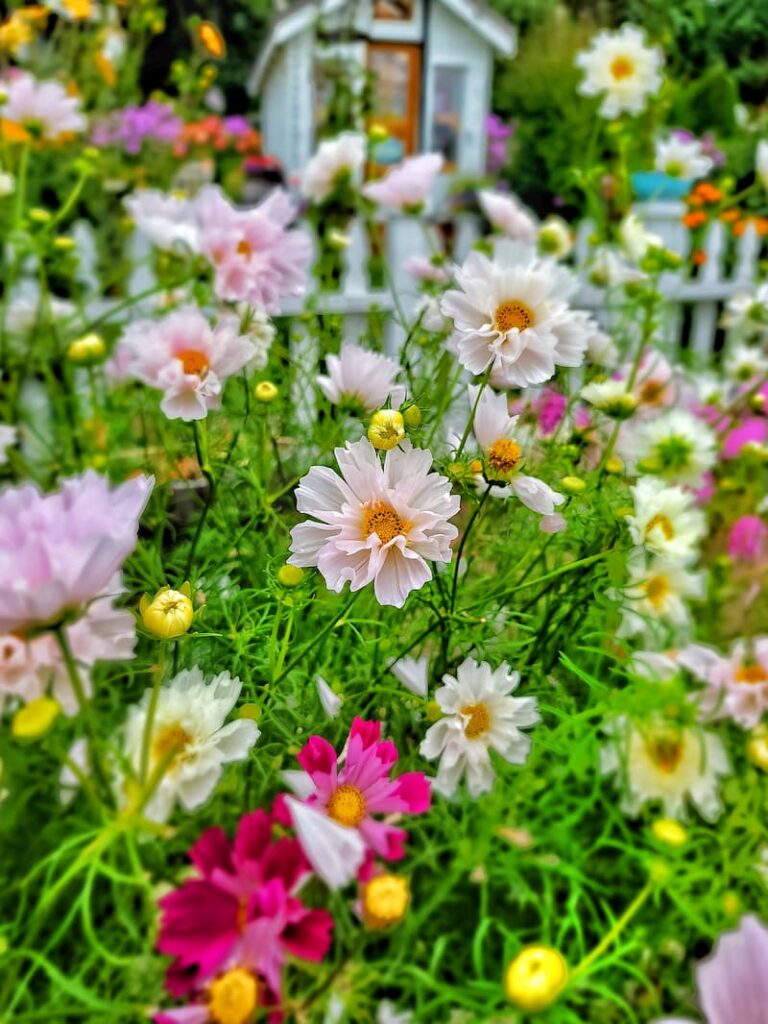
As an Amazon affiliate, I earn from qualifying purchases at no extra cost to you. My blog contains other affiliate links for your convenience as well. Click here to read my privacy policy.
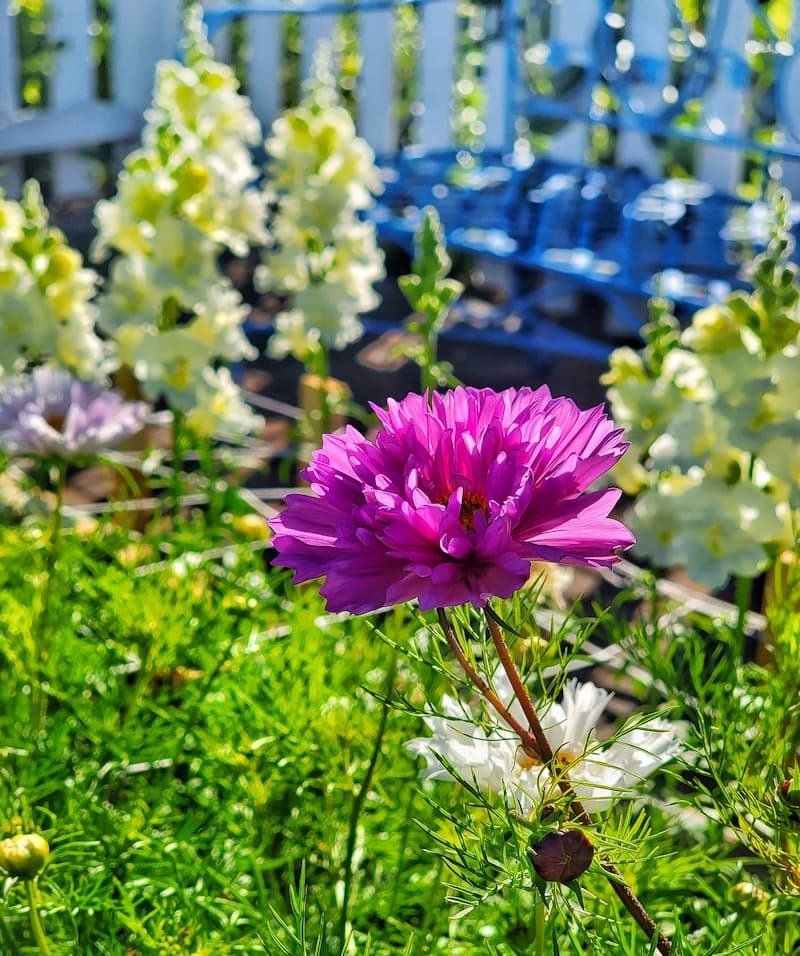
What Is a Deer-Resistant Plant?
While no plants are completely deer resistant, deer will avoid certain plants that have:
Not surprisingly, deer tend to stay away from poisonous plants. Daffodils, foxgloves, and poppies are common flowers that deer avoid.
Flowers and Plants Deer Love
While it’s helpful to know which plants are resistant to deer, understanding which varieties are deer favorites is equally important.
Deer prefer certain vegetation types, usually because these plants are rich in nutrients and have a soft, easily digestible texture. Here are some of the plants and flowers that often attract deer to the garden:
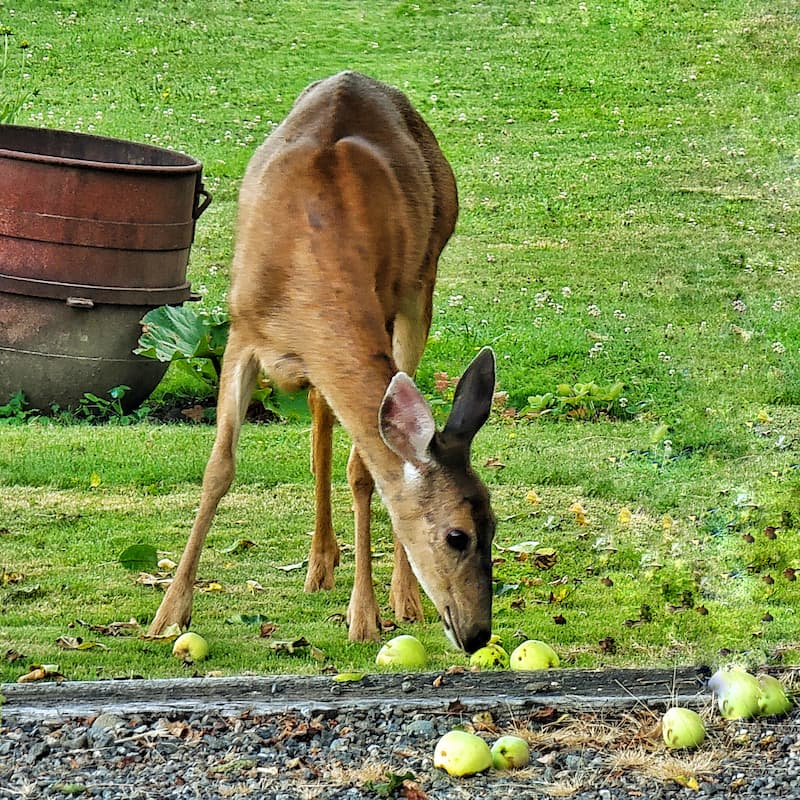
How Do I Keep Deer Out of My Garden Naturally?
Several effective, natural methods exist to discourage deer from feasting on your plants and flowers. Here are some of the ways you can protect your garden naturally.
Plant Deer-Resistant Varieties
One of the simplest ways to deter deer is by planting naturally less appealing varieties. Deer tend to avoid plants with strong fragrances, fuzzy leaves, or bitter tastes. Consider planting lavender, peonies, and foxgloves in your garden.
Use Natural Deer Repellent
Homemade or commercially available natural repellents can be sprayed directly on plants. Common ingredients include garlic, hot peppers, or eggs. These all have odors or tastes that deer find offensive.
I use Liquid Fence in my garden. It smells terrible when spraying on my roses and other deer-loving plants, but it works! Repellents are non-toxic and safe for the environment, and they can be reapplied as needed to maintain their effectiveness, especially after it rains.
Install Physical Barriers
Physical barriers like fences are the most effective ways to keep deer out. A deer-proof fence should be at least 7 or 8 feet tall or installed at a 45-degree angle to discourage jumping.
You can also buy a deer fence netting to protect your garden plants.
Garden Supplies and Tools
Check out my favorite garden supplies and tools for the growing season. Whether you’re looking for potting soil or deer repellent, you’ll find what I use in my own garden.
Utilize Scare Tactics
Deer can be frightened by sudden movements and loud noises.
I use a motion-activated sprinkler in my cut flower garden to keep deer away. You can also use motion-activated lights, wind spinners, or hang wind chimes or CDs that move in the wind to startle deer away from the garden. The key is to vary these tactics to prevent deer from getting used to them.
These methods are non-invasive and add an element of surprise to deter deer without causing them harm.
Create an Unfriendly Terrain
Deer are less likely to enter an area where the footing is uncertain. Use sharp gravel or uneven surfaces around the most vulnerable plants to deter deer from approaching.
Companion Planting
To keep your garden safe, surround the more deer-appealing plants with strong odors or rough textures, such as lavender, marigolds, and sage.
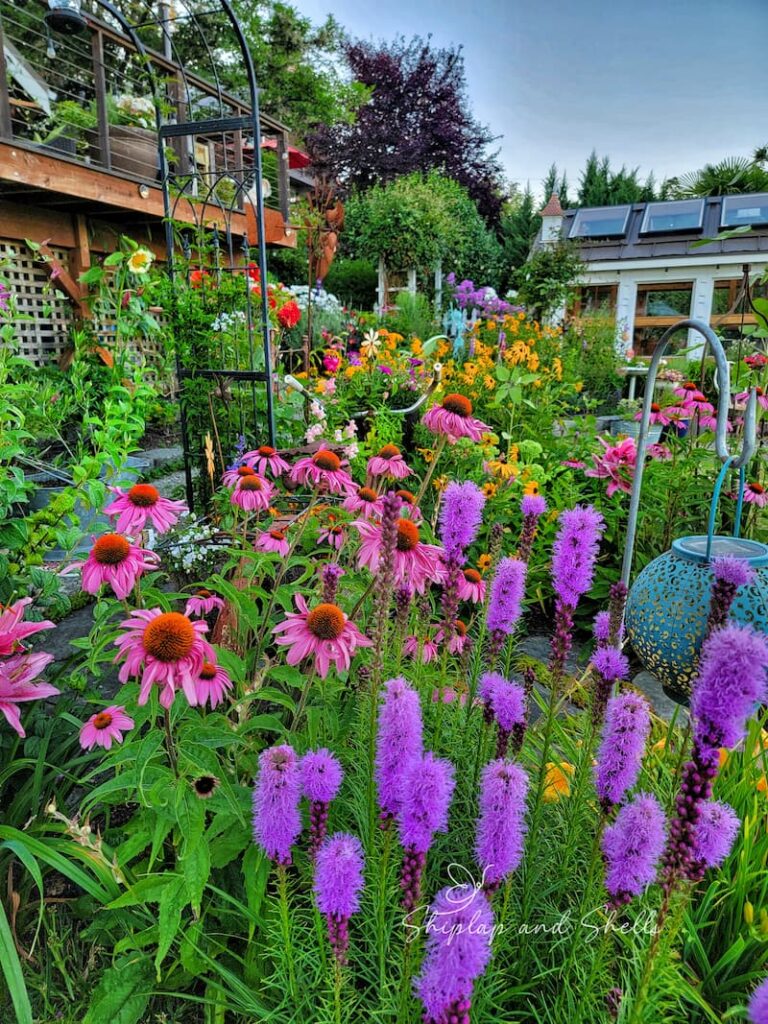
Deer Resistant Plants and Flowers
The easiest way to keep deer out of your garden is to grow plants they don’t want to eat. Here is a list of plants and flowers that have become favorites in my garden. They’re beautiful additions, and the deer seem to leave them alone.
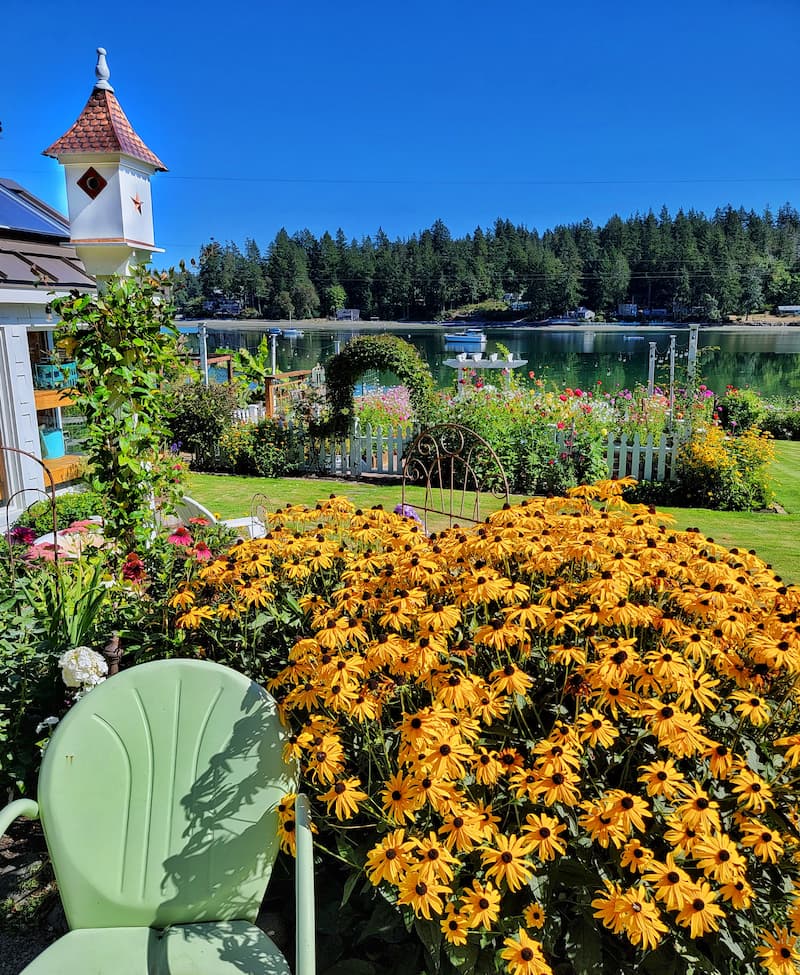
1. Black-Eyed Susans
Because black-eyed Susans are covered in coarse hair, deer and rabbits stay away from these perennials. Another positive note about this perennial is that butterflies and bees are attracted to this gorgeous flower!
This native perennial is the perfect plant to divide and transplant in the spring. You will have black-eyed Susans growing throughout your garden in no time.
2. Boxwood
If you’re hunting for a deer-proof plant, boxwood is a great choice. This shrub has dense foliage and a strong scent that is unappealing to deer. They’ll often avoid it and move on to another type of plant.
Boxwood can be pruned into various shapes, from hedges to topiaries. It’s drought-tolerant and thrives in most soil types and lighting conditions.
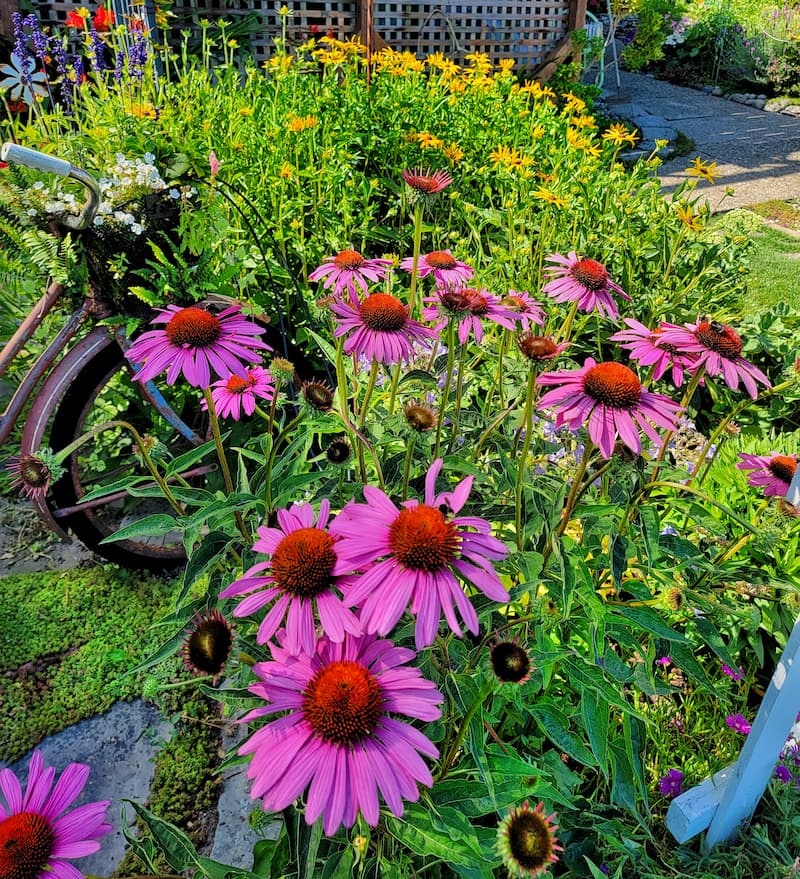
3. Coneflower
Also known as Echinacea, coneflowers have a bitter taste, rough texture, and prickly stems, making this flower a perfect deer-resistant plant for your garden.
Coneflowers attract pollinators to the garden and bloom from mid-summer to the first frost. You can find echinacea in pink, purple, and white.
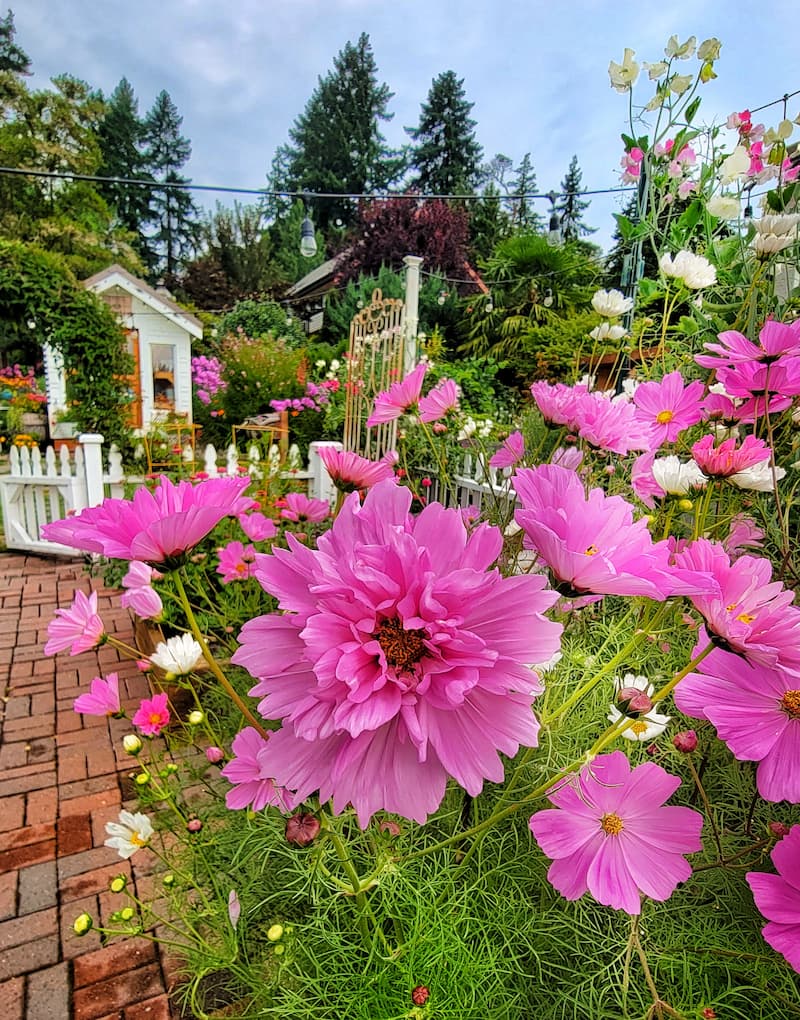
4. Cosmos
These beautiful annuals have thick, leathery leaves and a bitter taste that deer don’t like. Cosmos flowers contain a sap called “Cosmosin,” an effective natural deterrent that makes them unappealing to deer.
Bees and butterflies love cosmos. One of my favorite things about this whimsical flower is that the more you cut, the more blooms the plant will produce. There are several different varieties to choose from.
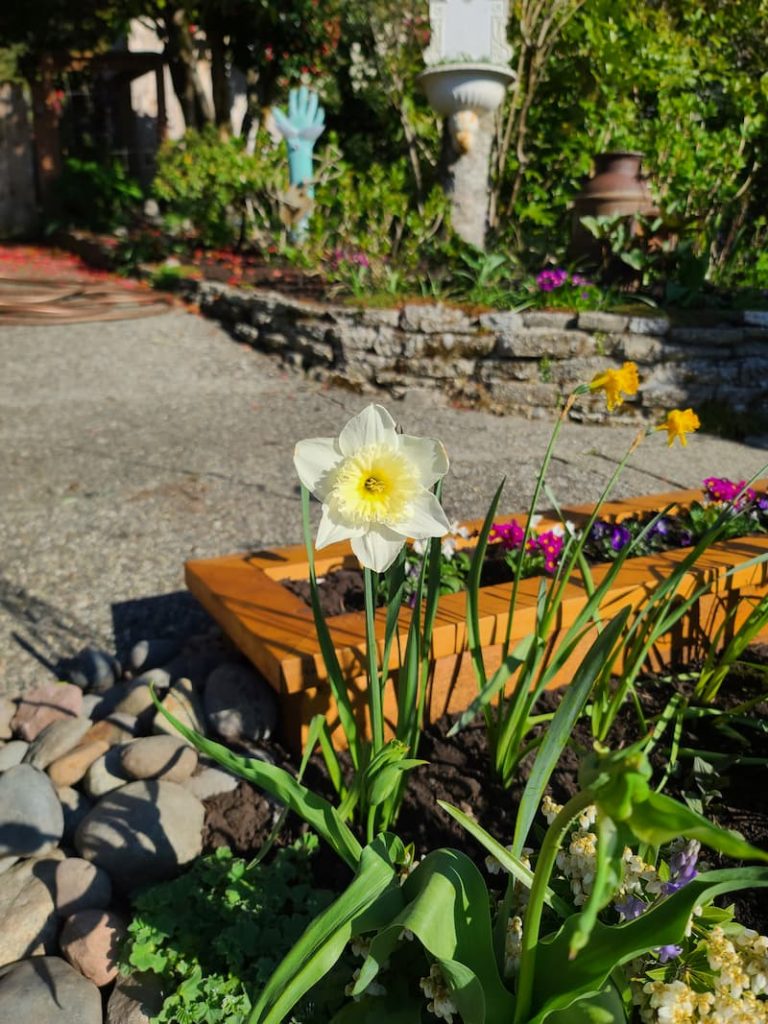
5. Daffodils
If you’re looking for a charming, early spring pop of color in the garden, daffodils are a great plant option for your deer-resistant spring garden. Their strong scent is uninviting, and their tender leaves and stems can cause mild to severe stomach irritation.
Also, daffodil’s bright colors can confuse deer’s vision when identifying potential food sources.
Even when the blooms are spent, the foliage of a daffodil will continue to grow and feed the bulb for the following year. As cut flowers, they are long-lasting and brighten up any space in your home.
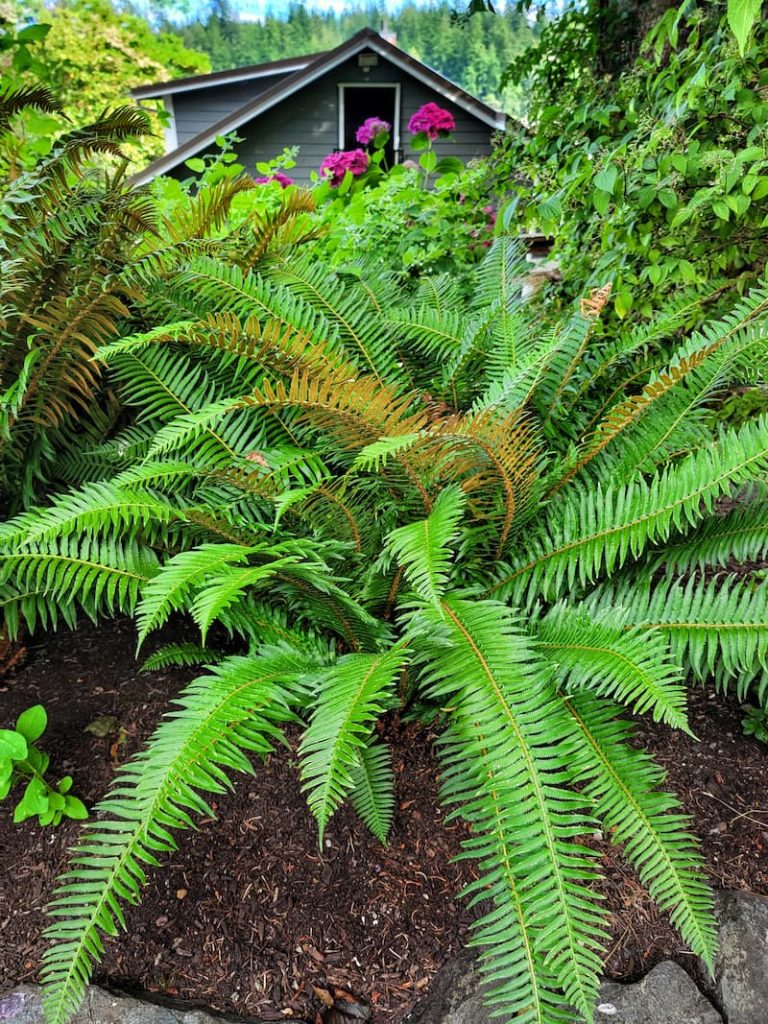
6. Ferns
Hungry deer are sure to resist your garden ferns for several reasons. Ferns don’t offer the same nutritional benefits as other plants in your yard. Their leathery texture makes ferns an undesirable food source for deer.
Their dense foliage makes it difficult for deer to access them and see the plant.
If you want more texture and interest in your garden, consider planting these native plants. Their delicate fronds will add depth.
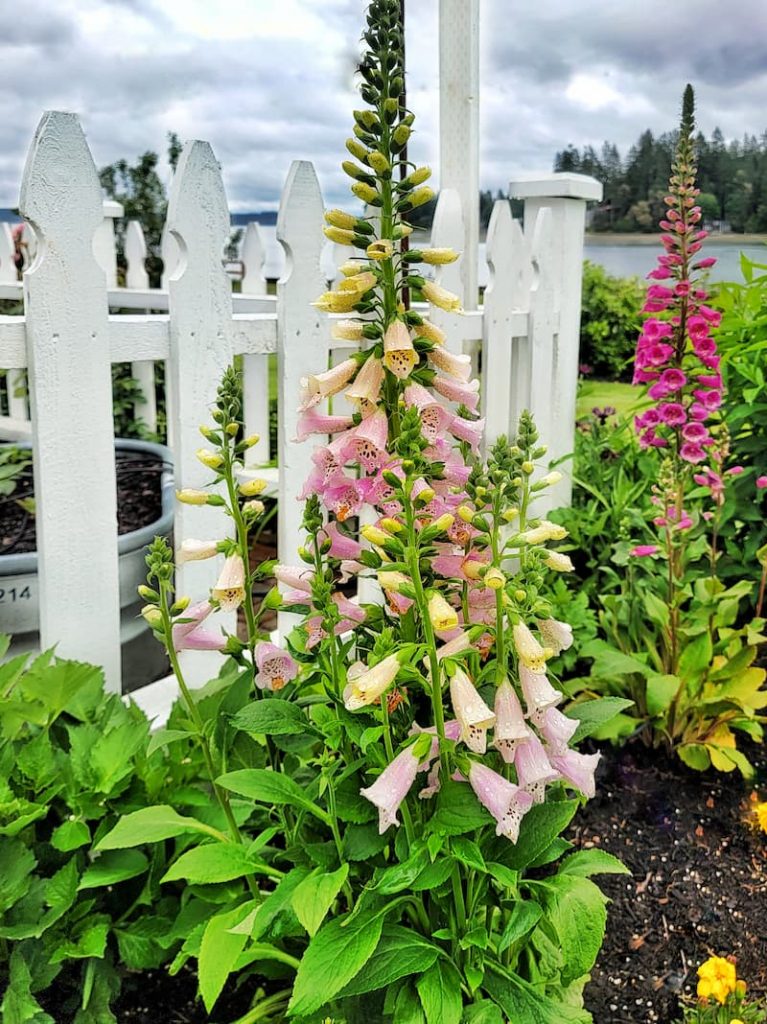
7. Foxglove
This colorful bell-shaped flower with freckles inside is an excellent choice for deer resistance in the garden. Foxgloves contain a high level of alkaloids, which cause a bitter taste and are toxic to deer.
Foxgloves are poisonous plants, so keep children and pets away if you’re growing them in your garden.
Their height and uniquely beautiful blooms make these flowers an excellent choice for back-of-the-border gardens and even as a stunning backdrop for more traditional bedding plants.
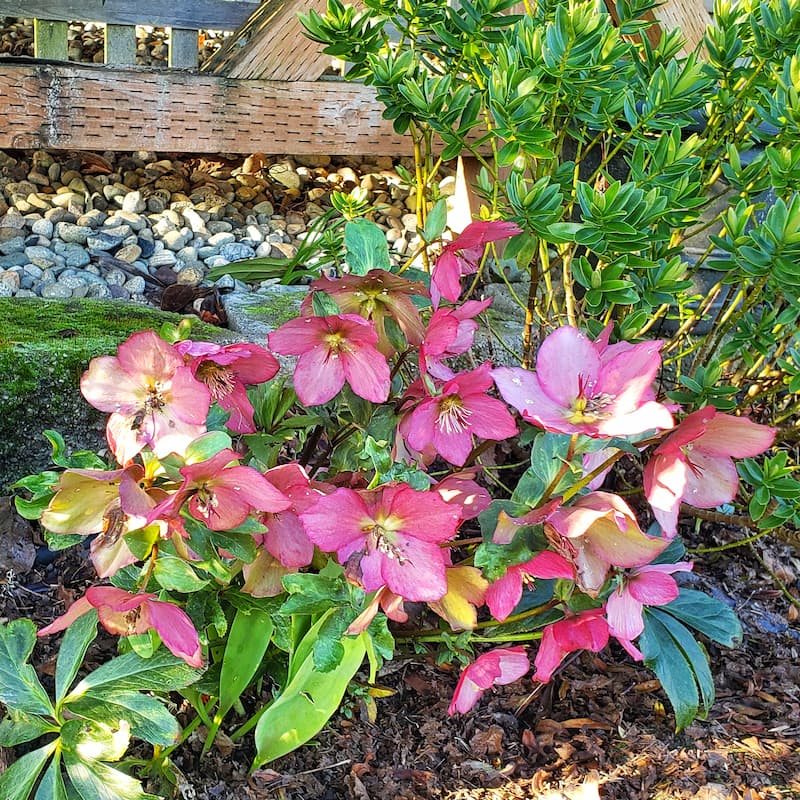
8. Lenten Rose – Hellebores
These beautiful blooms are a real showstopper during the cold, gloomy winter and early spring months when there are so few flowers in the garden.
Hellebores, or lenten roses, are hardy plants that repel deer because of their strong odor. The prickly foliage makes it hard for deer to bite and eat it.
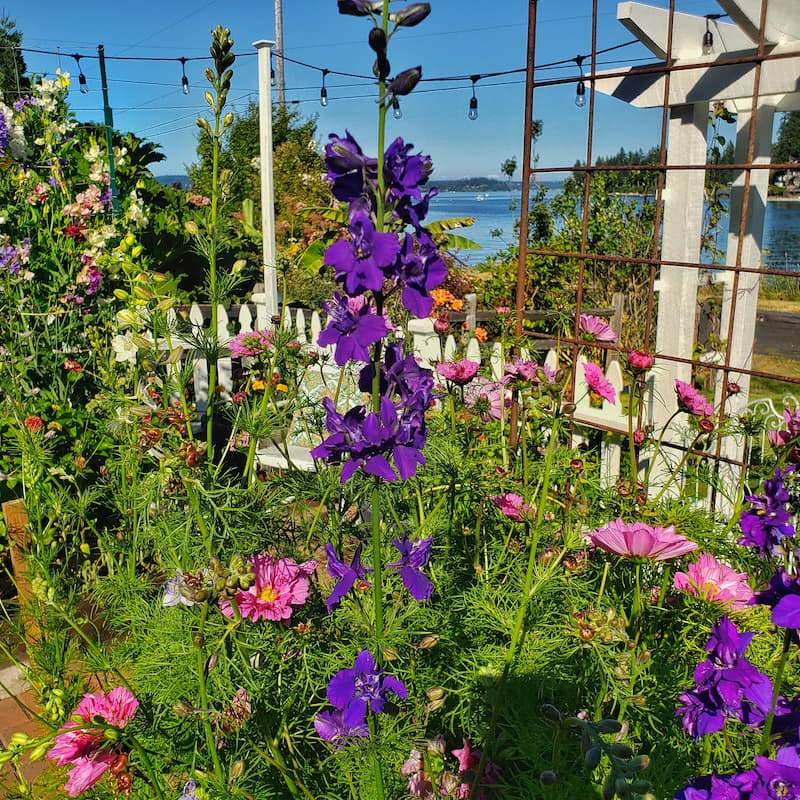
9. Larkspur
This stunning summer flower is a beautiful choice for your deer-resistant garden. Its tall stems, sharp-pointed leaves, and pungent scent create an effective barrier to keep deer away.
Larkspur plants are also toxic to deer and other grazing animals. These colorful flowers are fabulous additions to any floral arrangement because they add so much interest.
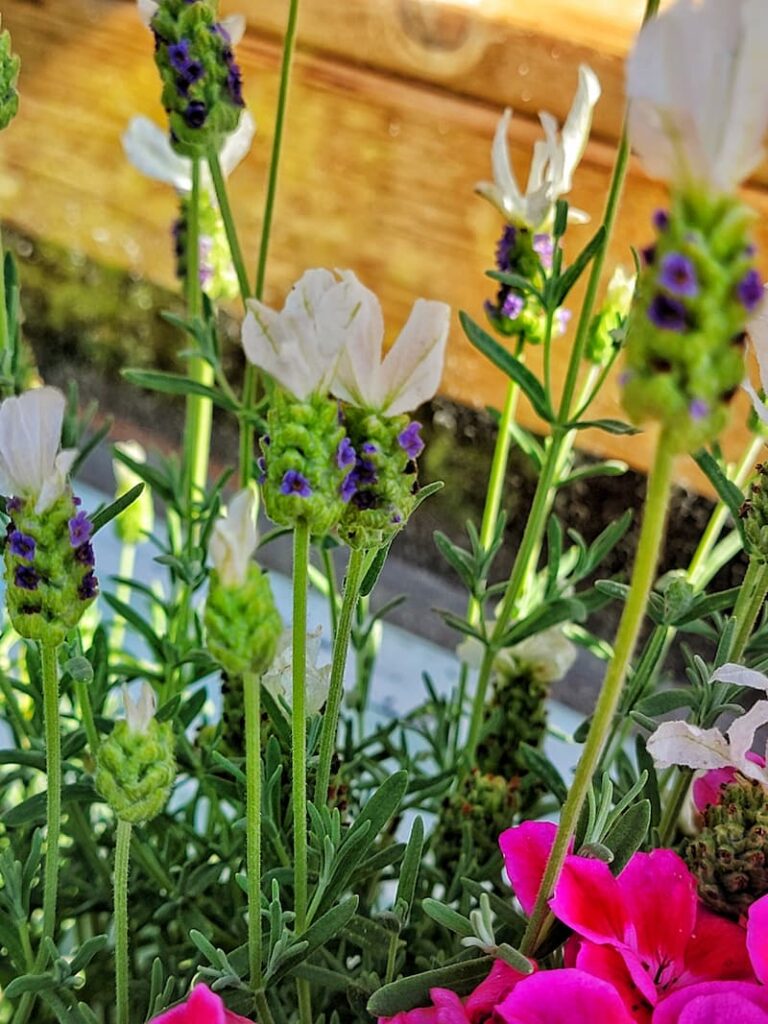
10. Lavender
If you’re looking for a fragrant and colorful plant for your garden, lavender is a great addition. This flowering plant from the mint family has a sweet floral scent that deer care for.
Its woody stems and leaves also make this plant less appealing to deer.
Lavender is a hardy plant that can tolerate dry soil and full sun, making it versatile for any garden. It produces the most beautiful purple blooms and has a soothing scent to give you much-needed calmness.
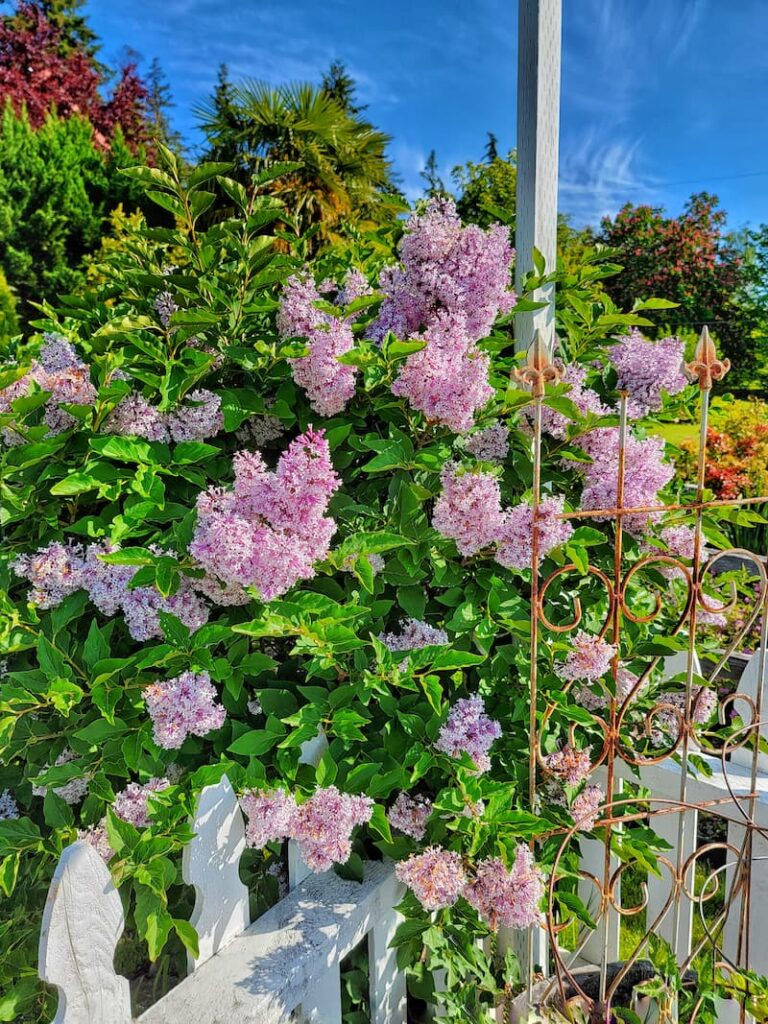
11. Lilacs
Are you looking for a plant that smells amazing and keeps the deer away? Lilacs are a perfect choice.
Their strong scent and bitter taste make lilacs an excellent option for gardeners struggling with deer damage.
Lilacs are known for their delicate blooms and unforgettable fragrance. These shrubs can grow up to eight feet tall and produce lavender, pink, and white flowers.
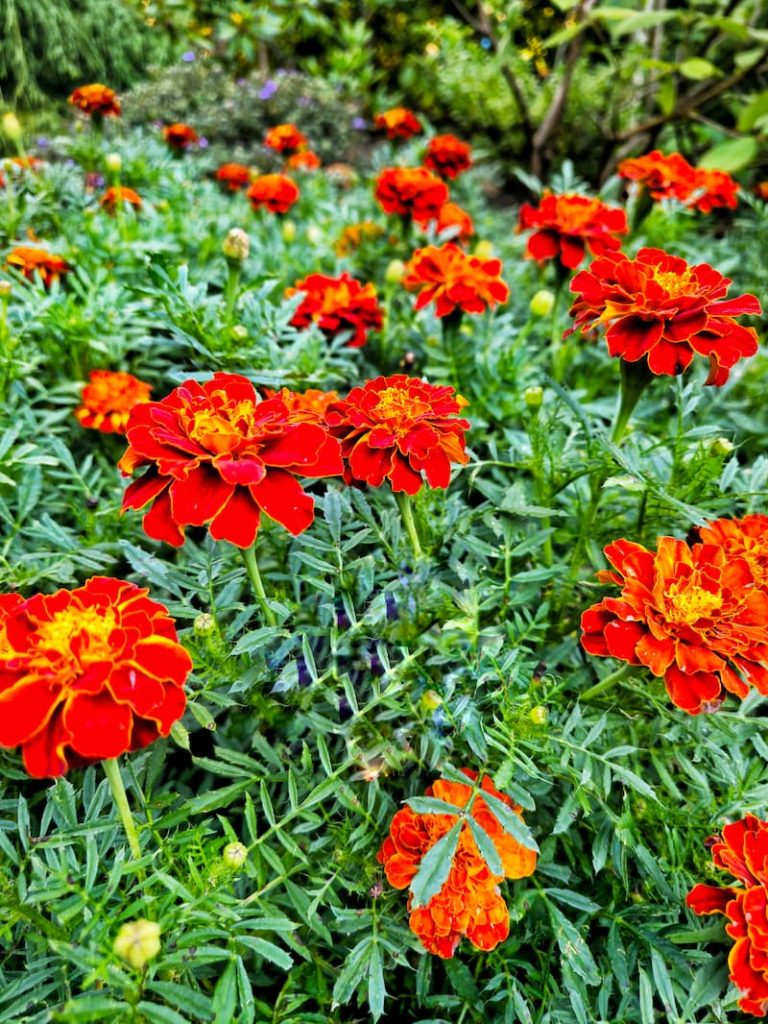
12. Marigolds
These bright orange and yellow blooms will brighten up any summer garden. They are also the most deer-resistant plant in the summer garden. Planting them next to other plants that deer love to eat is a good idea and one of the easiest ways to keep deer away.
Marigolds have a pungent aroma and bitter taste that deer despise. The oils and resins found in marigolds can also repel deer.
This plant has a carnation-like flowerhead that will thrive in the sunshine and is drought tolerant.
13. Mint
This popular herb is known for its fragrant leaves and culinary uses. It’s also an excellent addition to your garden if you’re looking for a plant that repels deer.
Mint has a strong scent that deer dislike, making it an effective deterrent.
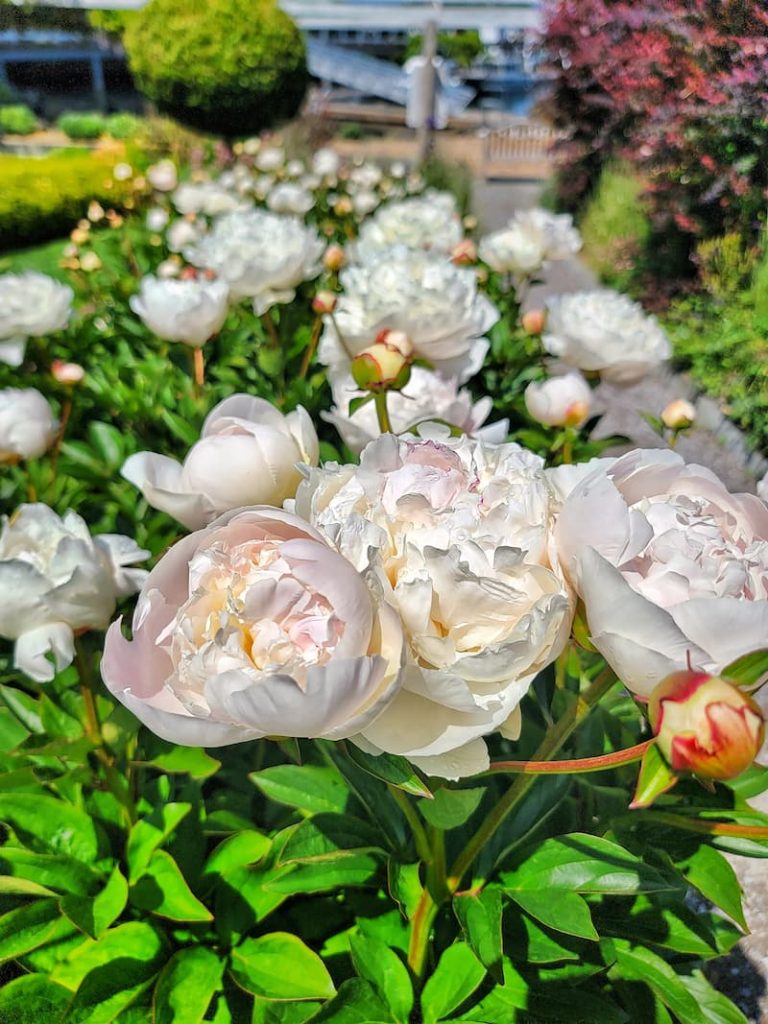
14. Peonies
One of my favorite flowers in the cottage garden, peonies have fragrant blooms and are known to be pest-proof, including deer.
Peonies have thick, hardy stems and foliage and a strong scent that makes them unpalatable to deer and other garden pests.
These blooms will bring beauty to your garden and add a fabulous cut flower to your floral arrangements.
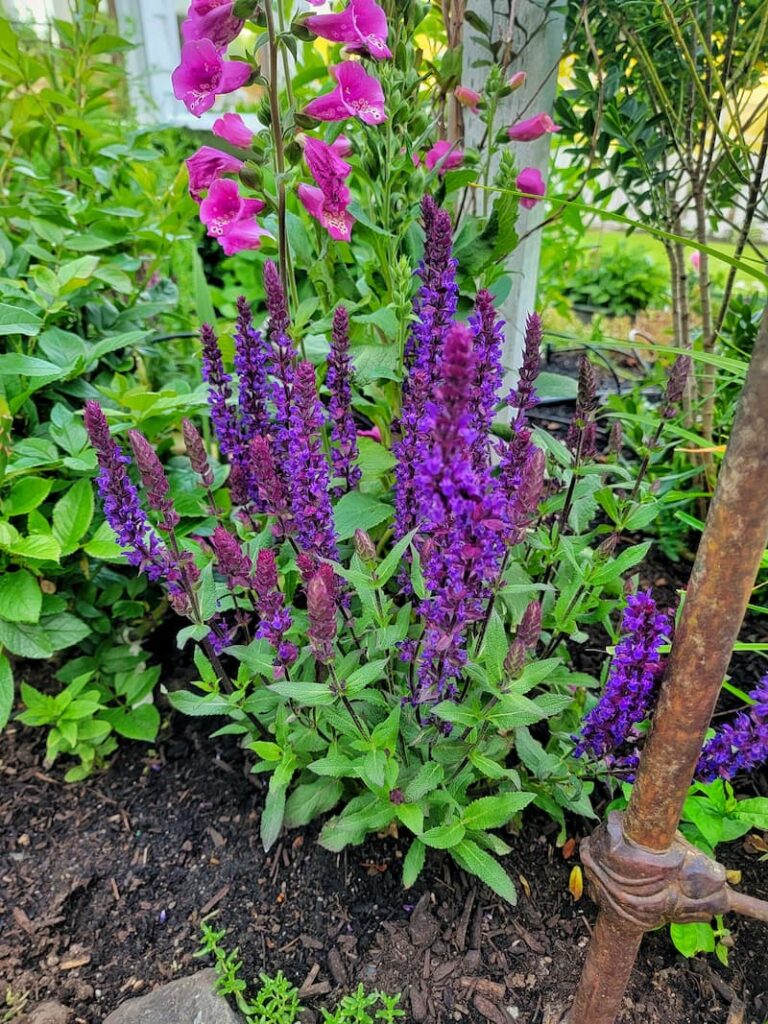
15. Salvia
With its pungent scent and fuzzy texture, salvia is unappealing to deer. This plant will give your garden a pop of color and benefit pollinators.
Salvia is drought-tolerant and can thrive in full sun or partial shade, making it versatile for any gardener.
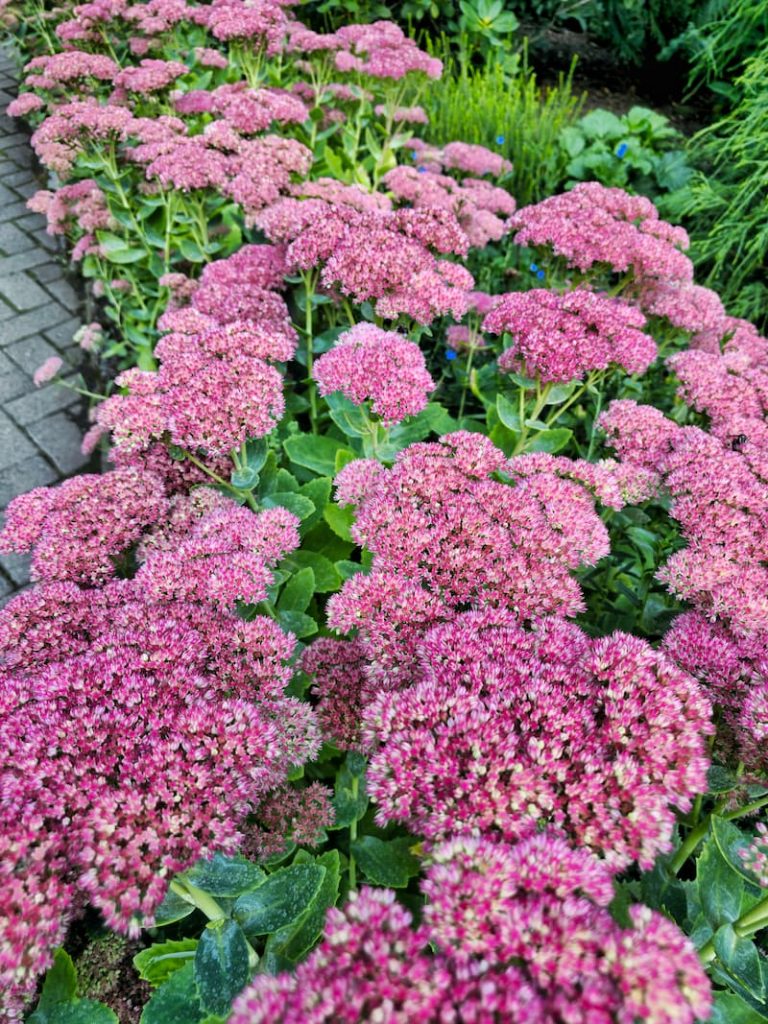
16. Sedum
Another low-maintenance and deer-resistant option for your garden is Sedum. This plant is relatively low in protein and other nutrients, and its bitter taste keeps deer from wanting to eat it.
This hardy plant comes in various colors and shapes, from ground cover to tall, spiky blooms.
My favorite variety is Sedum Autumn Joy, which has flower clusters on tall stems that start as green and turn into a pretty dusty rose in late summer and early fall.
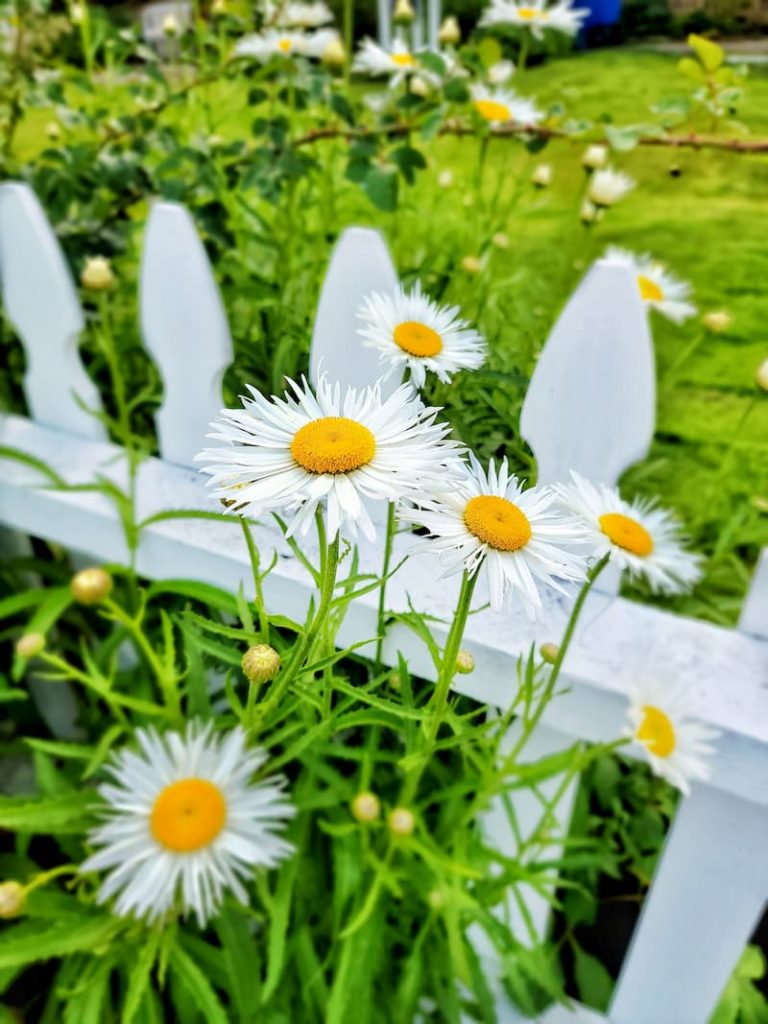
17. Shasta Daisies
Deer don’t like this plant’s bitter taste and spiky texture. The daisy’s sharp leaves and stems make it tough for them to chew and swallow.
Shasta daisies are a perfect perennial for dividing and transplanting throughout your garden. These plants will grow up to three feet and are a pretty early summer cutting flower.
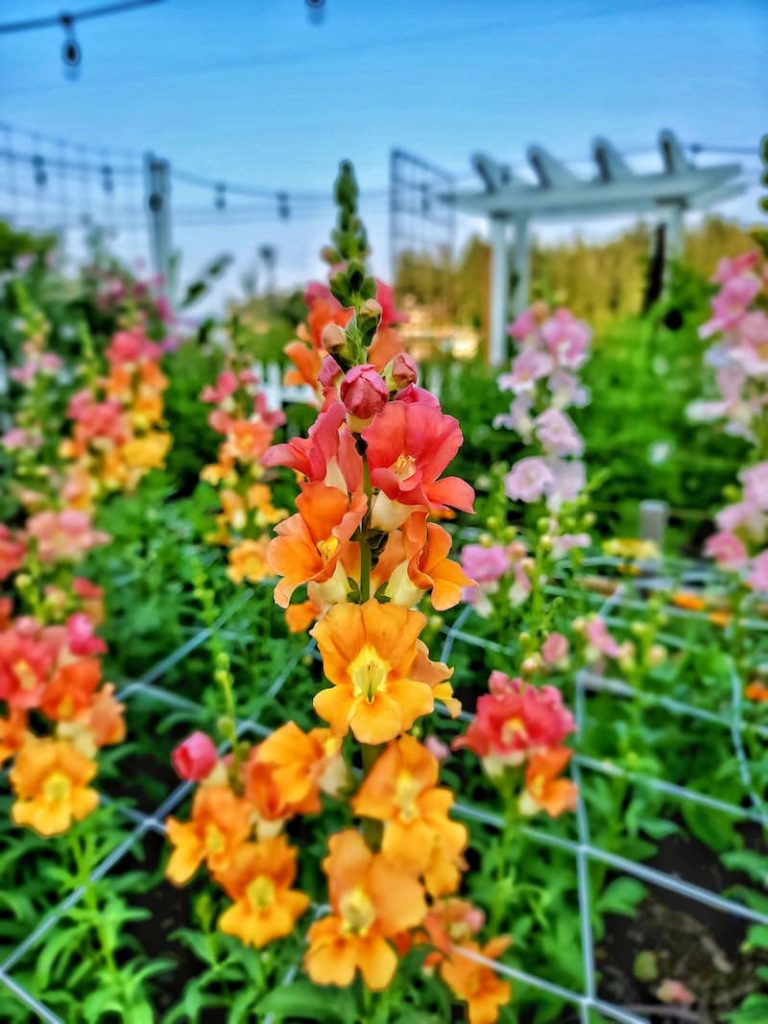
18. Snapdragons
Deer stays away from snapdragons due to their bitter taste and prickly, fibrous texture.
Snapdragons are sun-loving annuals that are the perfect filler flower for floral arrangements. This particular variety has tall, strong stems with warm-colored butterfly-like blooms. They can reach from 36-48 inches tall.
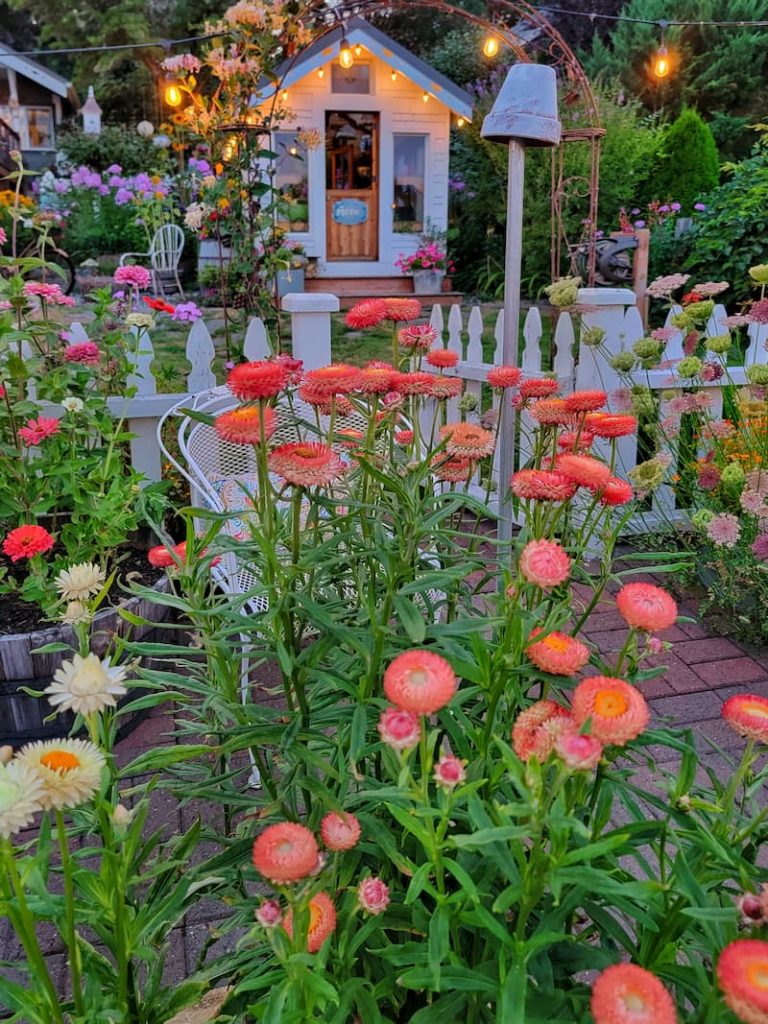
19. Strawflower
When it comes to deer-resistant annuals, strawflowers are one of the best plants to grow in your flower beds. Their intense scent and prickly textures are the best deer deterrents and discourage deer from grazing.
Strawflowers are similar to daisies in form but with stiff and papery petals. They make the most beautiful dried flowers and add interest to any summer floral arrangement.
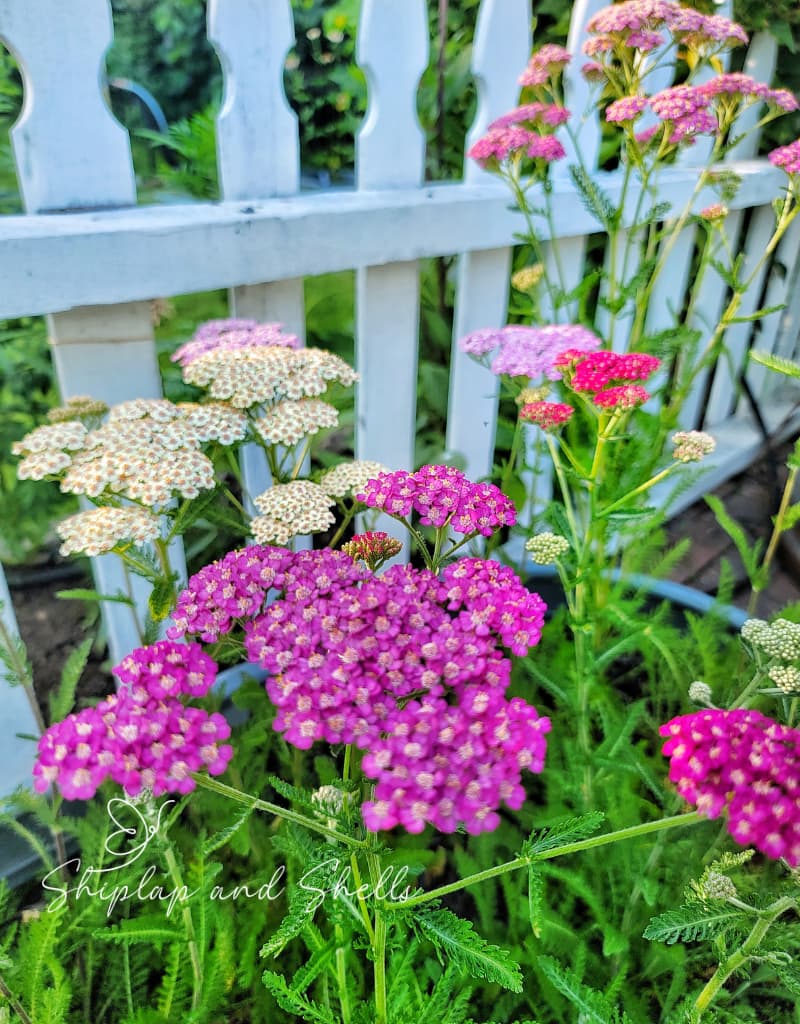
20. Yarrow
Deer despise the bitter and aromatic taste of yarrow leaves. The leaves have a waxy coating that can be difficult for deer to digest.
With its clusters of long-lasting, colorful blooms, yarrow makes a great addition to any cut flower or cottage garden.
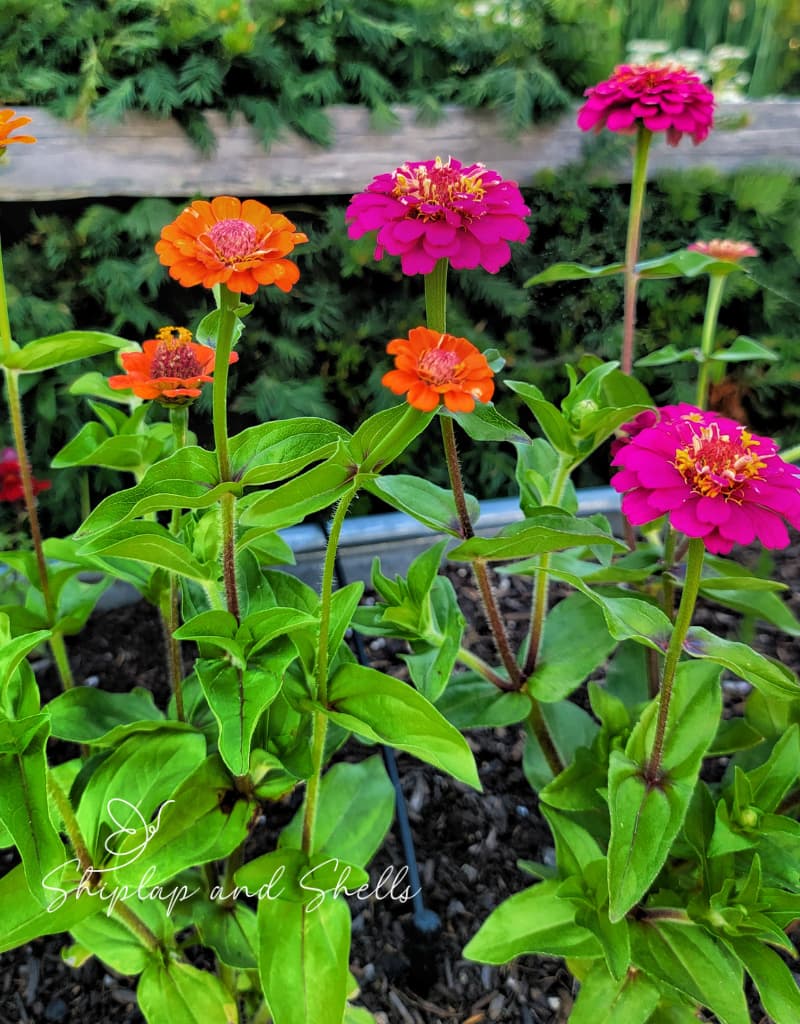
21. Zinnias
This bright and beautiful summer annual has a strong odor that keeps the deer away. Zinnia’s thick leaf texture makes it challenging for deer to eat.
Zinnias are one of my favorite cut flowers. They add so much color and beauty to summer arrangements. The more you cut, the more blooms this plant produces, so you never run out of blooms to harvest throughout the growing season.
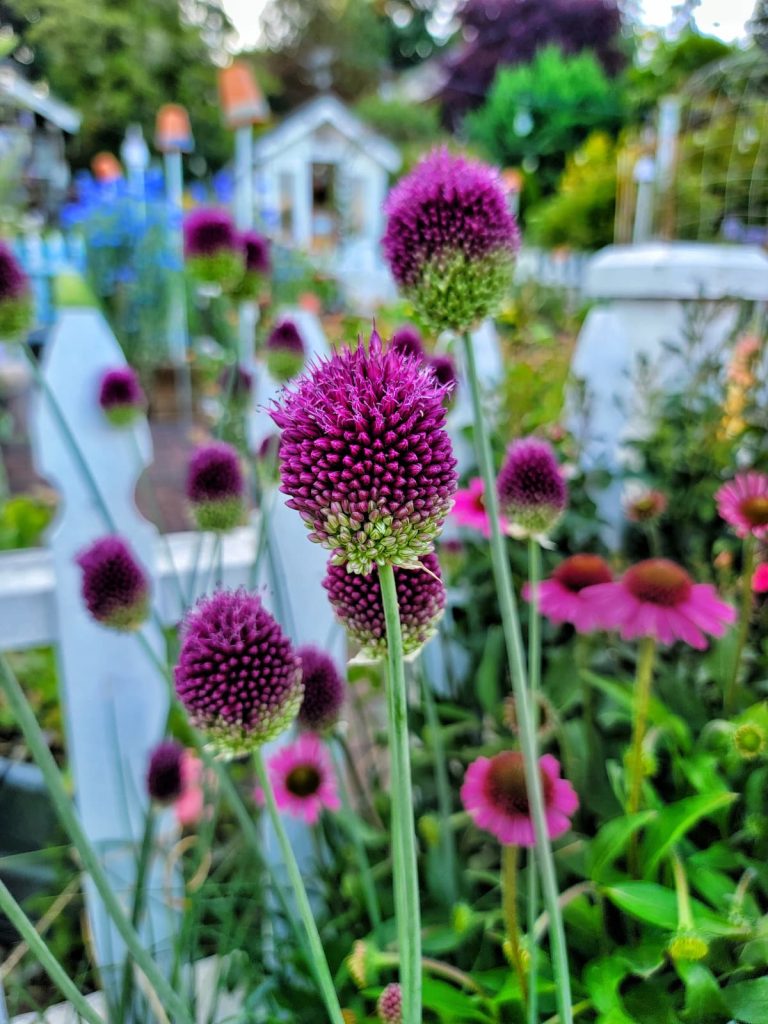
22. Allium
With their bold, globe-like flowers that sit atop tall, slender stalks, alliums are known for their dramatic visual appeal. Their pungent aroma, derived from their close relationship to onions and garlic, is generally unappealing to deer, making alliums an excellent addition to a deer-resistant garden.
Alliums are loved for their long-lasting blooms and minimal care requirements. They’re perfect for adding height and bursts of color to floral arrangements. As a bonus, these plants attract pollinators like bees and butterflies while keeping grazing deer at bay.
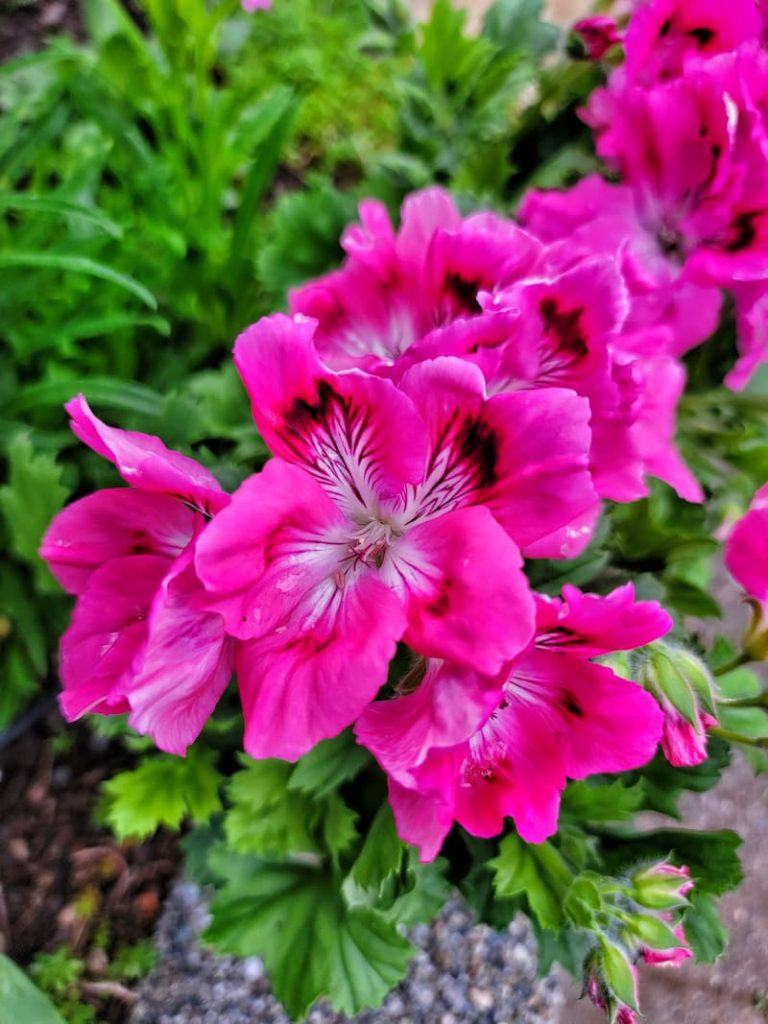
23. Geraniums
The strong, aromatic scent of geranium leaves is generally off-putting to deer, making them excellent plants for keeping these garden visitors away. Geraniums offer a variety of colors, from bold reds to soft pinks and pure whites, and are a beautiful choice for flower containers in the garden.
Regular deadheading will encourage geraniums to produce more blooms throughout the growing season, ensuring your garden remains a colorful and lively space. Plant geraniums around the perimeter of your garden or mixed in with more deer-prone plants to create a natural and effective repellent barrier.
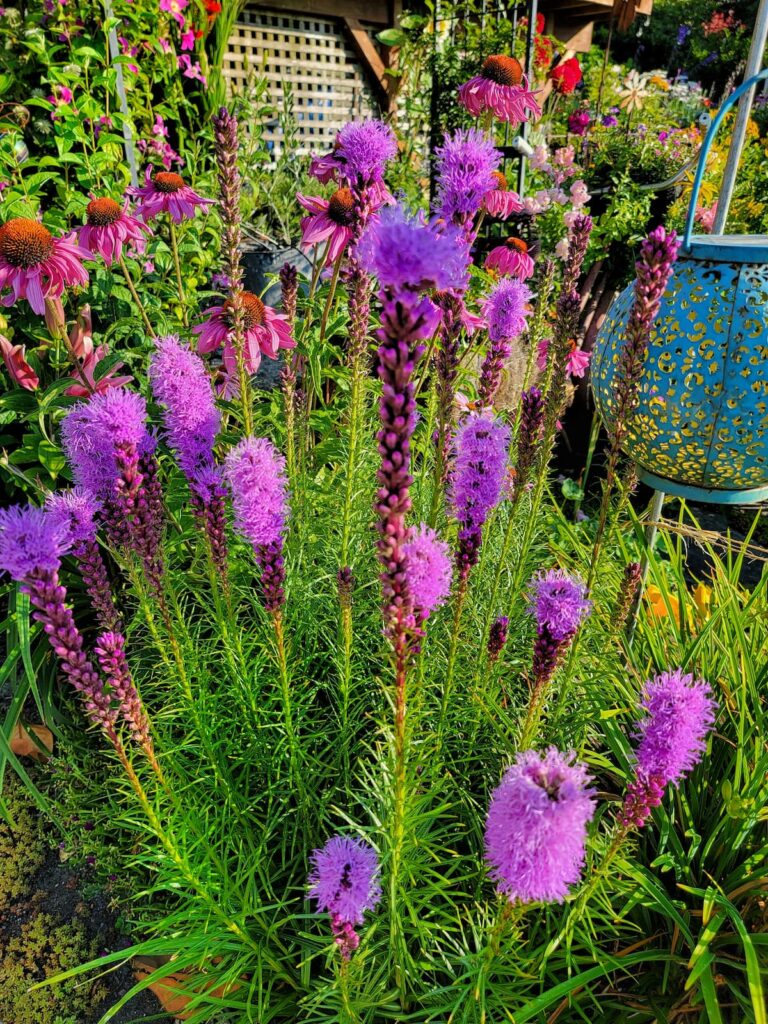
24. Blazing Star
Also known as Liatris, blazing star is a native perennial with tall, spikey flowers that bring effortless charm and vertical beauty to any garden. This plant is particularly resistant to deer due to its rough texture and minimal scent. Its vivid purple spikes add a stunning visual element and attract beneficial pollinators like butterflies and bees.
Blazing star is drought-resistant and thrives in well-drained soil, making it a favorite among gardeners who prefer low-maintenance plants. It blooms from mid-summer to fall, providing long-lasting color and interest in the garden.
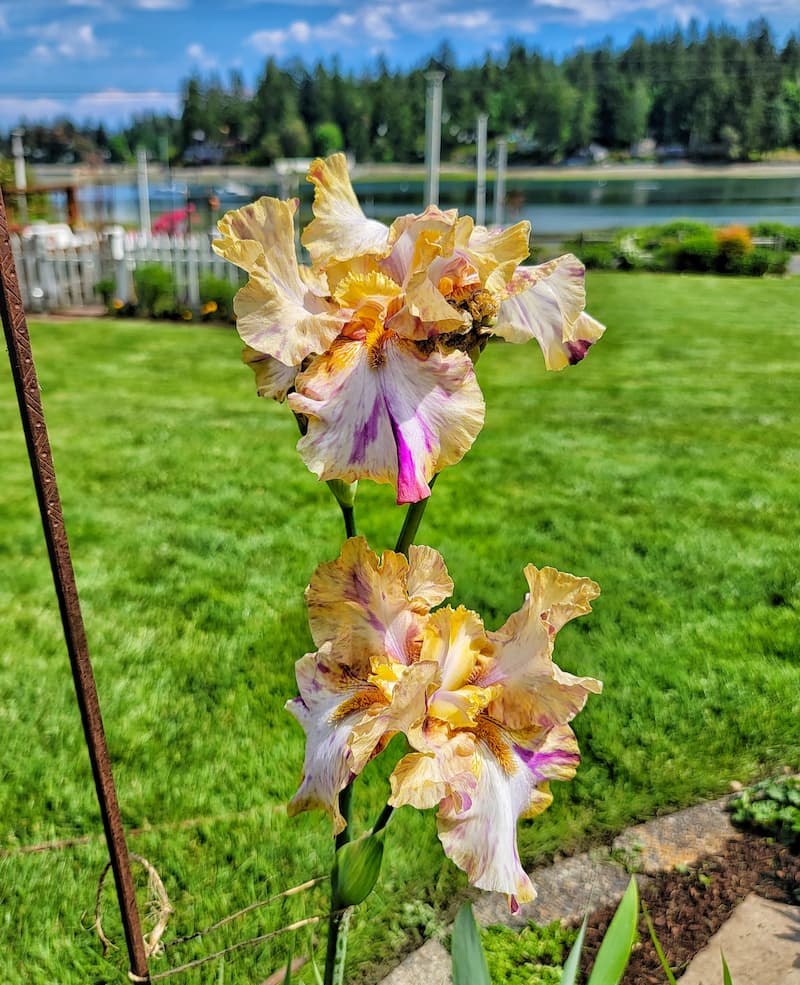
25. Bearded Iris
This hardy perennial has stunning, unique, showy flowers and sword-like foliage. Its leaves have a slight fragrance and somewhat bitter taste that deer find unappealing. The plant’s toughness and these characteristics make it less attractive to deer than more tender, palatable options.
Bearded irises come in various colors and patterns, providing a gorgeous display in late spring to early summer. They are easy to grow and maintain, thriving in well-drained soil and full sun. The plant’s ability to multiply and spread ensures that gardeners enjoy an expanding display year after year.
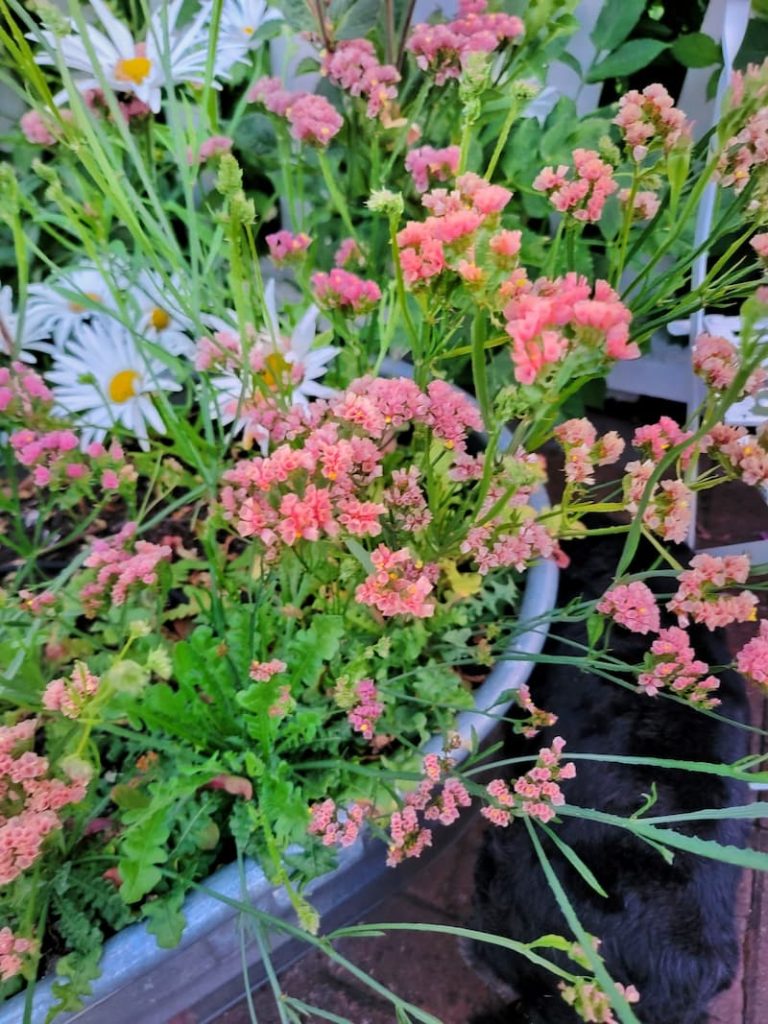
26. Statice
Statice, also known as sea lavender, is known for its long-lasting, vibrant clusters of flowers that look amazing when dried in floral arrangements. This plant is also notably deer-resistant, thanks to its somewhat leathery foliage and salty taste. Statice thrives in full sun and well-drained soil, making it an excellent choice for coastal and drought-prone gardens.
The papery texture of the flowers, which come in shades of blue, purple, pink, and white, adds a unique visual element to the garden and floral displays. Statice blooms profusely throughout the summer, providing continuous color and interest.
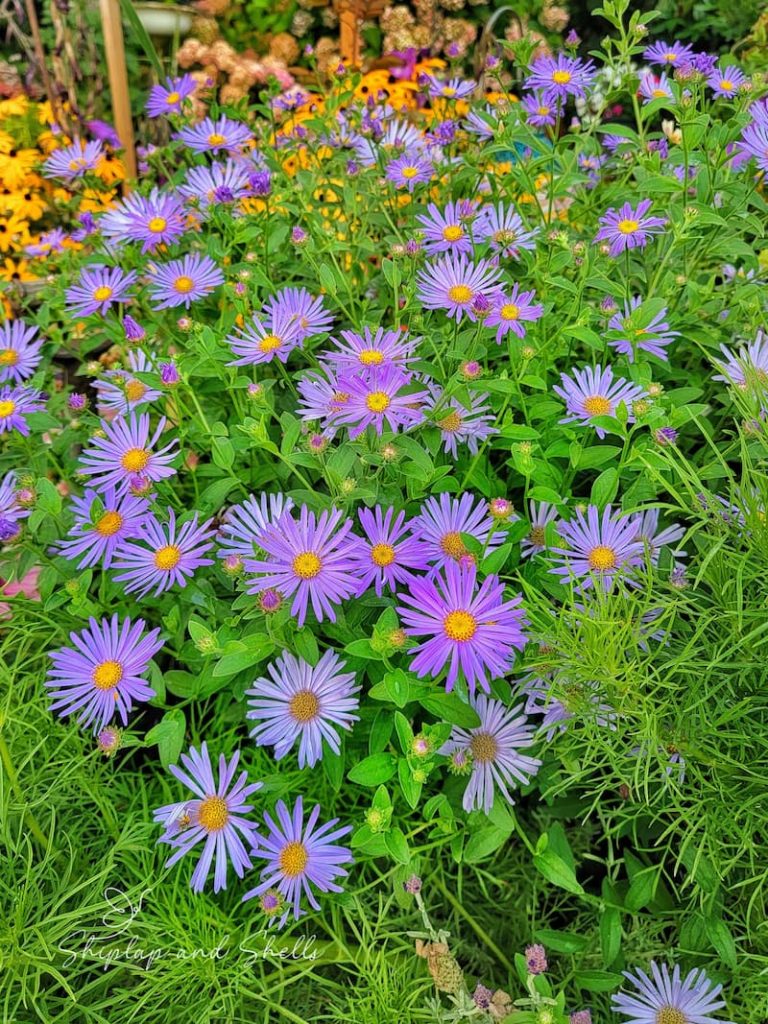
27. Aster
Asters are a fantastic addition to any fall garden, bursting with color when many other plants are beginning to fade. These hardy perennials are generally resistant to deer, who tend to avoid them due to their slightly bitter leaves and robust floral scent. Asters come in various colors, including shades of blue, purple, pink, and white, providing late-season beauty in the garden and a treat for pollinators like butterflies.
Easy to grow and maintain, Asters thrive in well-drained soil and full sun but can also tolerate partial shade. They are ideal for borders, wildflower gardens, or as part of a layered perennial bed.

28. Rosemary
The strong, aromatic oils in rosemary leaves are unappealing to deer, making it an effective natural repellent. Their woody stems and needle-like leaves are difficult for deer to digest.
This hardy perennial thrives in full sun and well-drained soil, making it suitable for drought-prone areas. Rosemary can be grown as a hedge or used in rock gardens and borders, adding aesthetic value and practical benefits. Its evergreen foliage and pale blue blooms provide visual interest year-round.
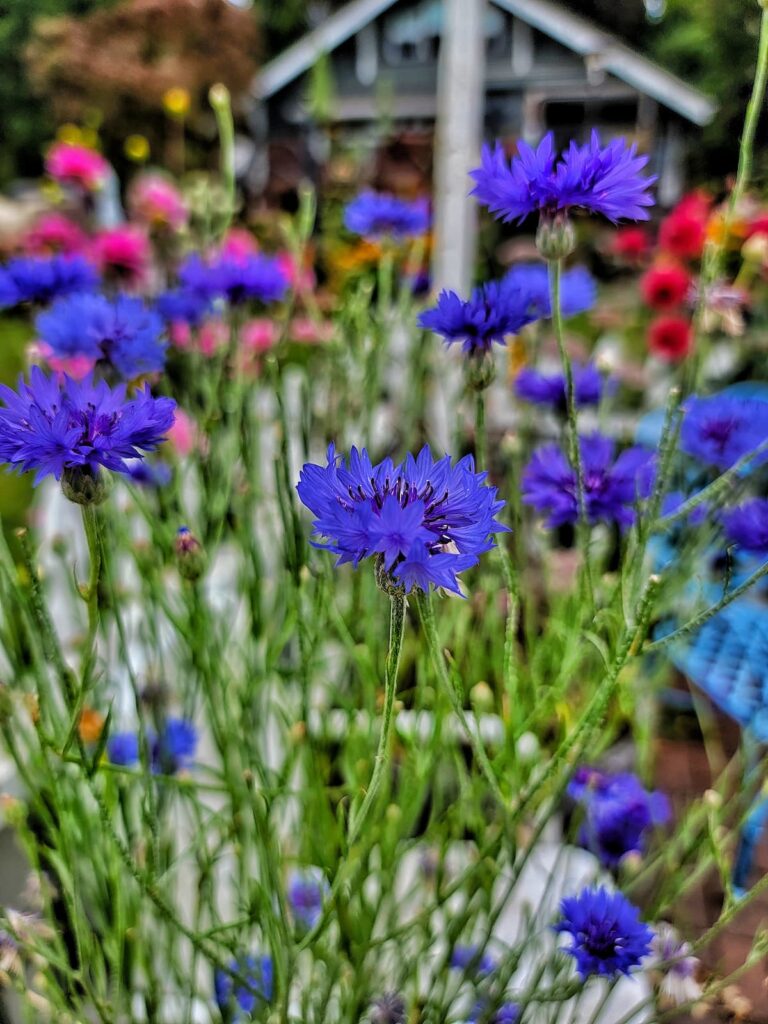
29. Bachelor’s Button
Also known as Cornflower, Bachelor’s Button is a charming addition to any garden with its vibrant, frilly flowers that range from deep blues to striking pinks and pure whites. This plant is notably resistant to deer, who typically avoid it due to its slightly bitter taste and the coarse texture of its foliage. This annual is easy to grow and tends to self-seed, providing a continuous display of color year after year without much effort.
Thriving in full sun and requiring minimal care once established, bachelor’s button is perfect for cottage gardens, wildflower meadows, and as a cut flower in floral arrangements. Its prolonged blooming period from early summer until fall ensures your garden remains lively and colorful.
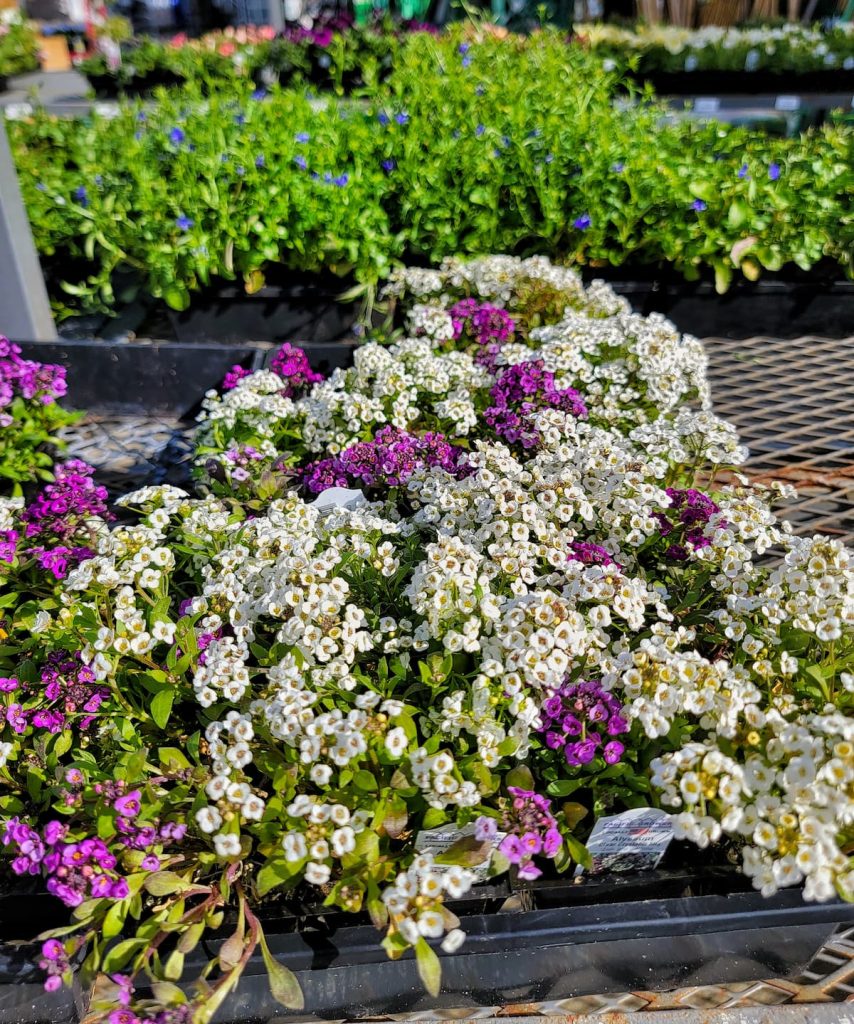
30. Sweet Alyssum
This pretty ground cover is known for its carpet of tiny, honey-scented flowers that can add a soft texture and a sweet fragrance to any garden setting. Despite its delicate appearance, Sweet Alyssum is surprisingly deer-resistant. Deer tend to bypass this plant because its fragrance and small flowers do not appeal to their palate.
Sweet Alyssum is a hardy annual that’s incredibly easy to grow and thrives in cooler temperatures, making it perfect for spring and fall gardens. Its white, pink, or purple blooms quickly fill in spaces, suppressing weeds and maintaining soil moisture. It’s also excellent for borders, containers, and hanging baskets, adding charm and color wherever it grows.
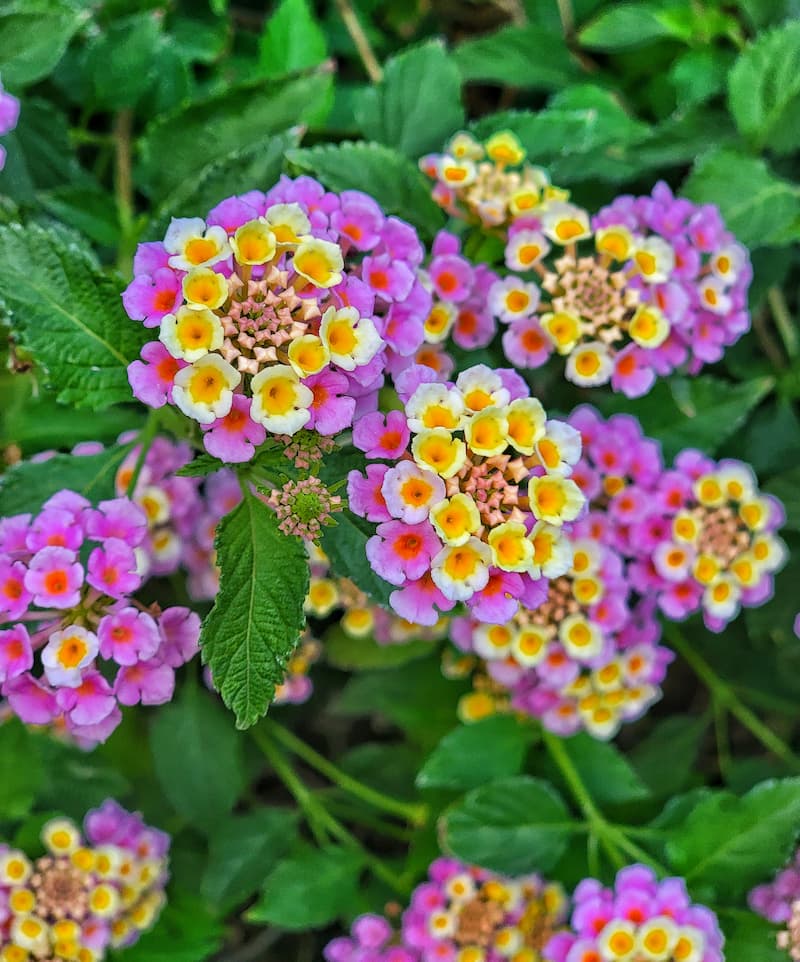
31. Lantana
Lantana is a vibrant, robust plant known for its clusters of small, brightly colored flowers that can transform any garden space with vivid red, orange, yellow, pink, and purple hues. This plant is highly deer-resistant, largely due to its rough-textured leaves and the strong, somewhat pungent scent they emit, which deer find unappealing.
Adaptable and tough, lantana thrives in hot, sunny conditions and is drought-resistant, making it an excellent choice for gardeners in warmer climates. It’s often used in borders, container gardens, and as ground cover, where its sprawling habit helps suppress weeds while adding continuous color from spring through fall. Lantana deters deer and attracts butterflies and hummingbirds to your garden.
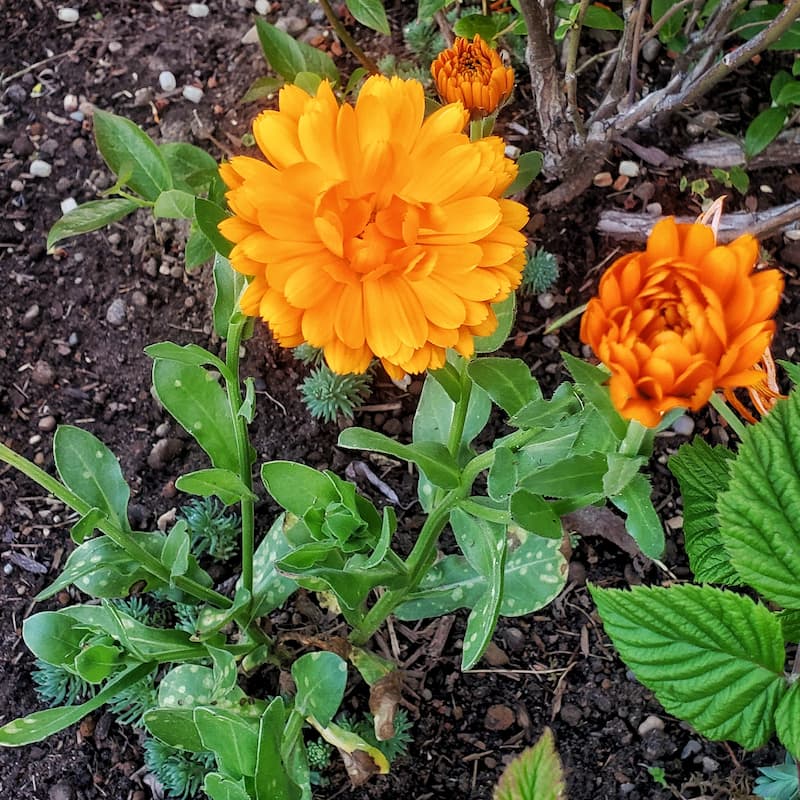
32. Calendula
Often called pot marigold, calendula is celebrated for its medicinal properties and vibrant, cheerful flowers that can brighten any garden. This plant is notably deer-resistant, as its slightly bitter taste and pungent scent are unappealing to deer, making it an excellent natural deterrent.
Easy to grow from seed, calendula thrives in cooler conditions and can be planted in spring and fall. Their blooms last until the first frost, providing long-lasting color and interest. Calendula’s flowers are beautiful and edible, adding a splash of color to salads and baked goods.
Ideal for borders, container gardens, and as a companion plant in vegetable gardens, calendula helps repel pests while attracting pollinators like bees and butterflies.
33. Bleeding Heart
This perennial is known for its unique, heart-shaped flowers that dangle delicately from arching stems, creating a stunning display in the shade garden. Bleeding Heart is highly deer-resistant, mostly because of its toxicity. When ingested, all parts of the bleeding heart are poisonous, which naturally deters deer and other browsing animals from eating it.
Thriving in partial to full shade and preferring moist, well-drained soil, bleeding heart is an excellent choice for woodland settings or shaded borders. It blooms in the spring, offering pink, red, or white flowers that can add a touch of romance to any garden area. After flowering, the plant often goes dormant in summer, especially if soil moisture is not maintained.
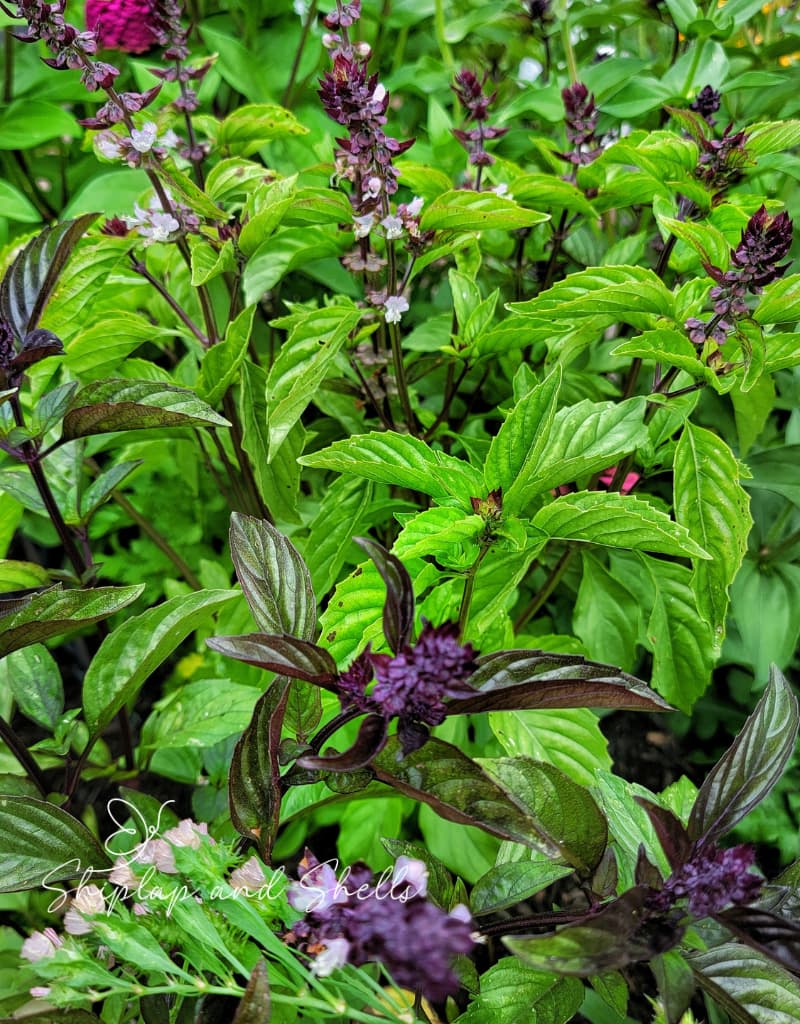
34. Basil
This highly aromatic herb is known for its flavorful leaves but is also an effective deer-resistant garden plant. Deer tend to avoid Basil due to its strong scent and essential oils, which are unappealing to their senses. This makes basil a fantastic companion plant for more vulnerable garden vegetables or ornamental plants.
Easy to grow in full sun and well-draining soil, basil thrives during the warm months and can be cultivated in the ground or in containers. Frequent harvesting of the leaves encourages the plant to become bushier and produce more foliage, which in turn provides a more substantial barrier against deer.
35. Astilbe
Known for its feathery, plume-like flowers and fern-like foliage, astilbe is a perennial and highly deer-resistant, thanks to its unpalatable taste and slightly toxic nature, discouraging deer from grazing on it.
Thriving in partial to full shade and requiring consistently moist soil, astilbe blooms in a variety of shades, including pink, red, white, and lavender, during the early to mid-summer, providing a long-lasting display of color when many other shade plants may have ceased blooming.
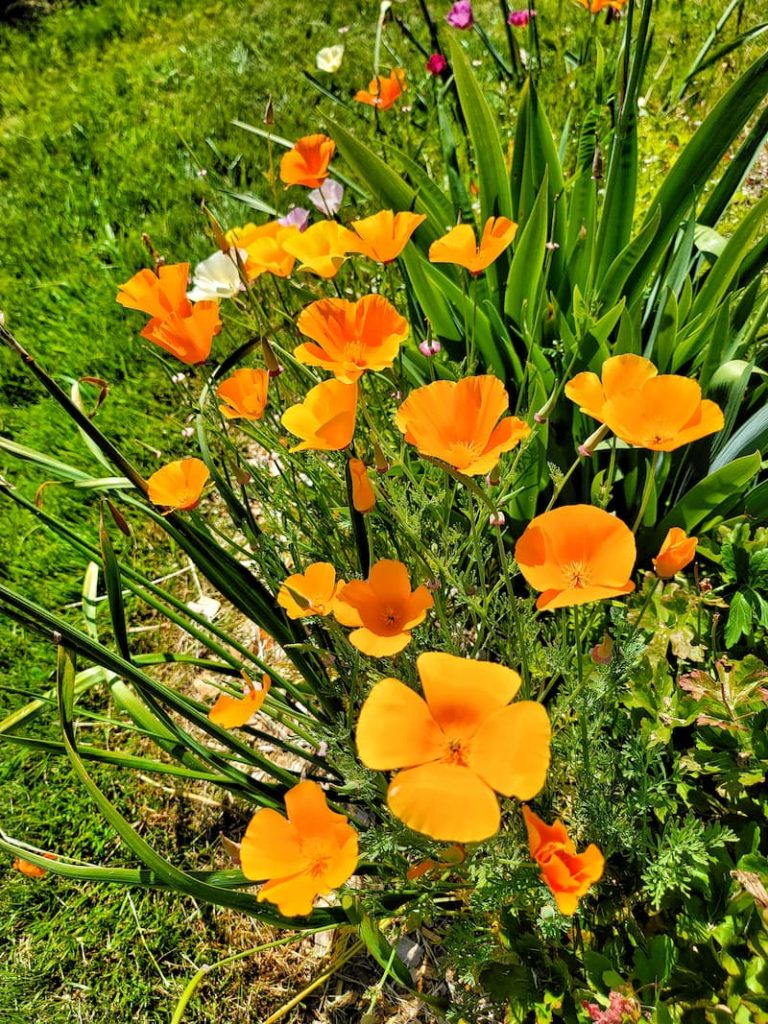
36. Poppies
These silky flowers add a burst of color to any garden and are notably deer-resistant. This is largely because of their slightly bitter taste and coarse leaves, which are unappealing to deer. Poppies are hardy and great for gardeners looking to combine visual impact with minimal maintenance.
Thriving in full sun and well-drained soil, poppies are perfect for rock gardens, borders, or wildflower meadows. They come in various colors, including red, orange, yellow, and white, and their delicate blooms create a stunning display from late spring to early summer. After flowering, poppies can be left to seed, which allows them to self-sow and return year after year, providing a perennial display of color.
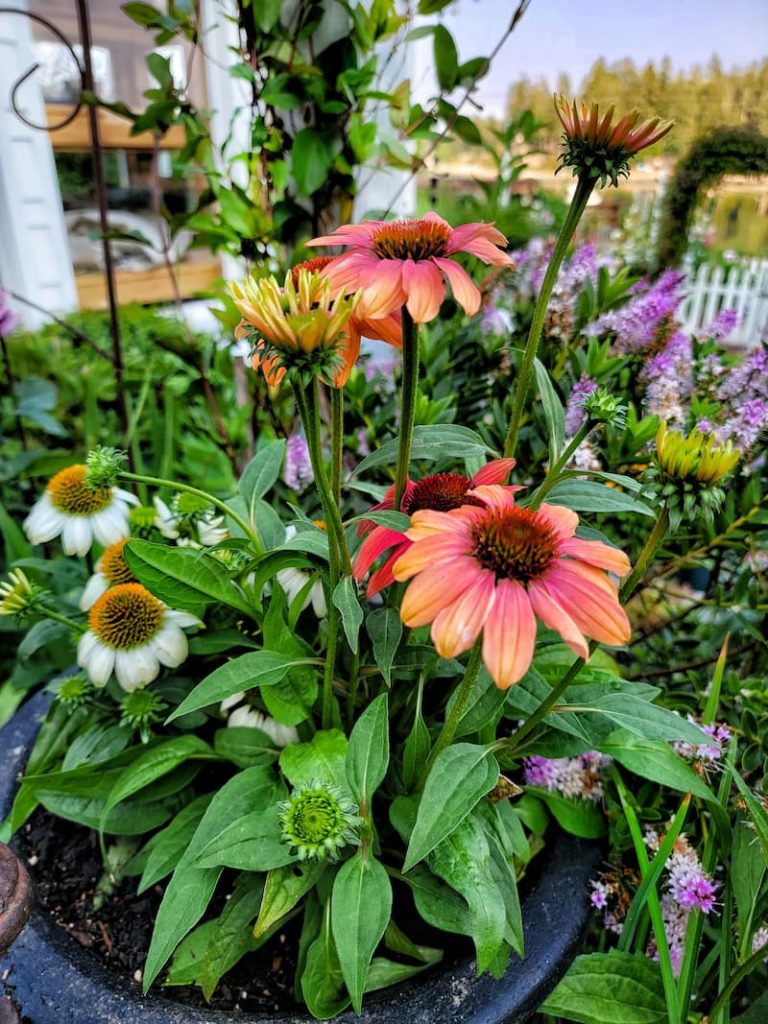
Common Questions About Keeping Deer Out of the Garden
What Plants Do Deer Hate the Most?
Deers avoid certain plants due to their strong scents, prickly texture, or bitter flavors. Incorporating these plants into your garden can help deter deer naturally. Here’s a list of some plants that deer usually dislike:
Herbs
Flowers
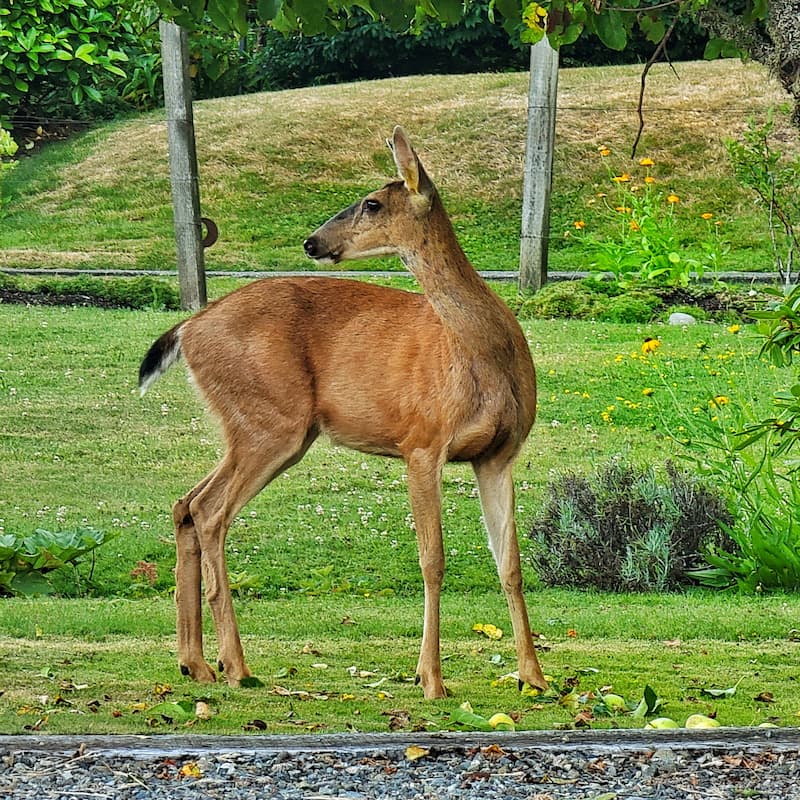
Do Coffee Grounds Keep Deer Away?
Using coffee grounds as a deer deterrent has not been scientifically proven as a commercial repellent or physical barrier. Still, they offer certain benefits that might help deter deer from your garden, such as a strong, pungent odor and the fact that the texture can be sensitive to deer when put on the ground.
Does Sprinkling Cinnamon Keep Deer Away?
Sprinkling cinnamon around your garden isn’t widely known as a reliable method of keeping deer away. Strong scents generally deter deer, but more commonly used repellents include garlic, soap, and commercial deer repellents with a more potent and lasting effect.
However, cinnamon might be worth experimenting with if you want to try natural methods due to its strong scent. It’s non-toxic and will not harm your plants.
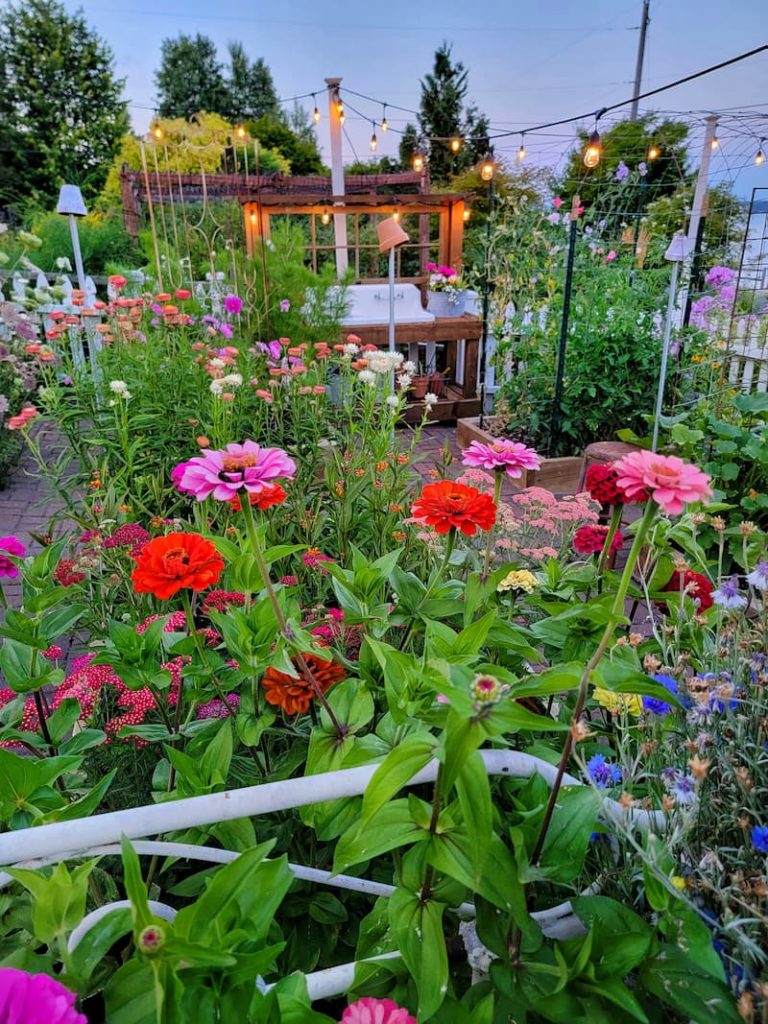
Can You Spray Vinegar on Plants to Keep Deer Away?
Yes, vinegar can be used as a deer repellent for your plants. The strong smell of vinegar is unappealing to deer and can help keep them away from your garden. However, using vinegar carefully is important because it can also harm plants if applied directly in its undiluted form.
Here’s how you can use vinegar safely as a deer deterrent:
What is the Best Homemade Deer Repellant?
Here’s a traditional gardener’s recipe widely used and recommended within the gardening community:
Ingredients:
Instructions:
Additional Tips:
Garden Supplies and Tools
Check out my favorite garden supplies and tools for the growing season. Whether you’re looking for potting soil or deer repellent, you’ll find what I use in my own garden.
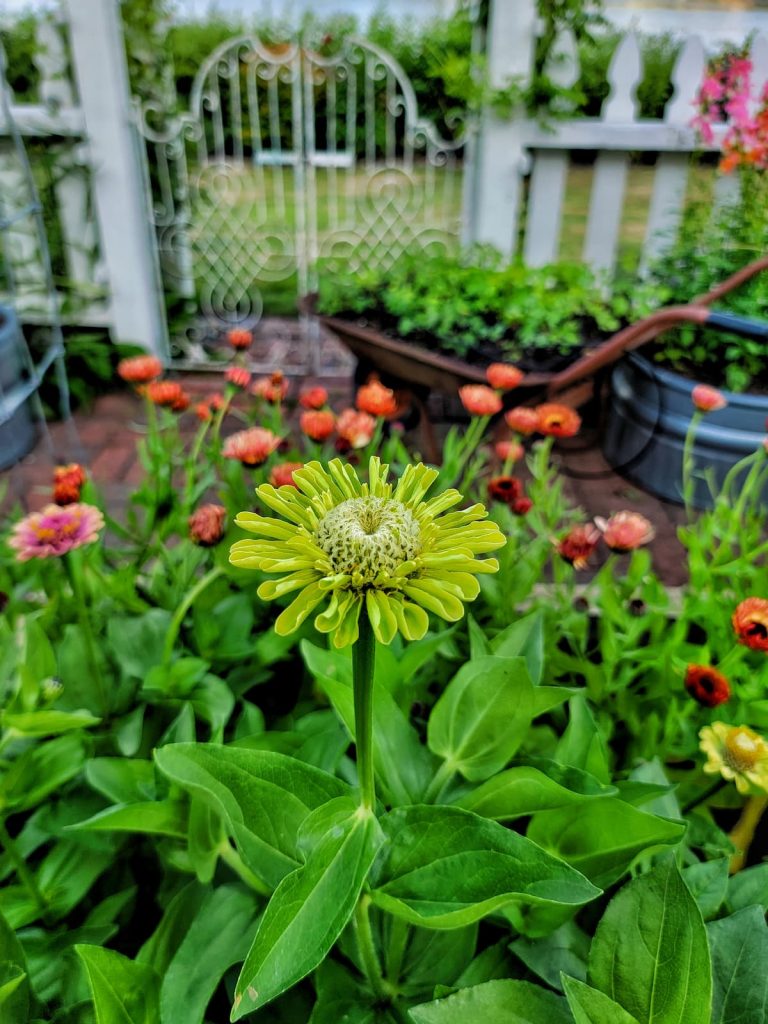
Final Thoughts About Deer Resistant Plants in the Garden
Growing a beautiful garden is so rewarding. The last thing you want is deer eating the flowers you’ve worked hard to grow.
While there are no COMPLETELY deer-proof plants, I hope you consider planting some deer-resistant plants and flowers I’ve mentioned here to keep your garden beautiful and low-maintenance.
If you have any questions or additional suggestions, please share them in the comments below. And be sure to share this blog post link with anyone who may find these gardening tips useful.
Until next time,
Happy Gardening!

I’m a self-taught hobby gardener. Everything I share on my blog is my opinion and what has worked for me.
Follow Me for More Inspiration
Shop my Amazon Storefront, LTK sources, and favorite home decor, garden, and lifestyle products. When you purchase from one of my links, I earn a small commission, which helps me continue sharing all the content you expect on my blog.
Be sure to follow me on Pinterest, Instagram, Facebook, TikTok and LIKEtoKNOW.it. Do you like gardening? Join my Facebook Gardening Tips & Tricks group.

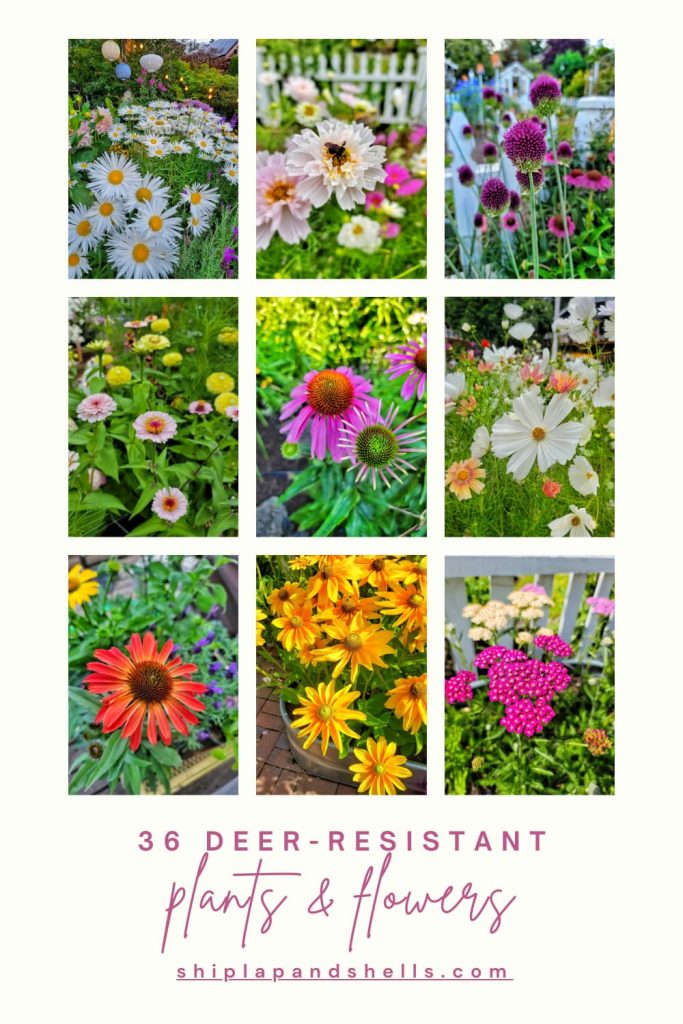

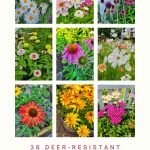
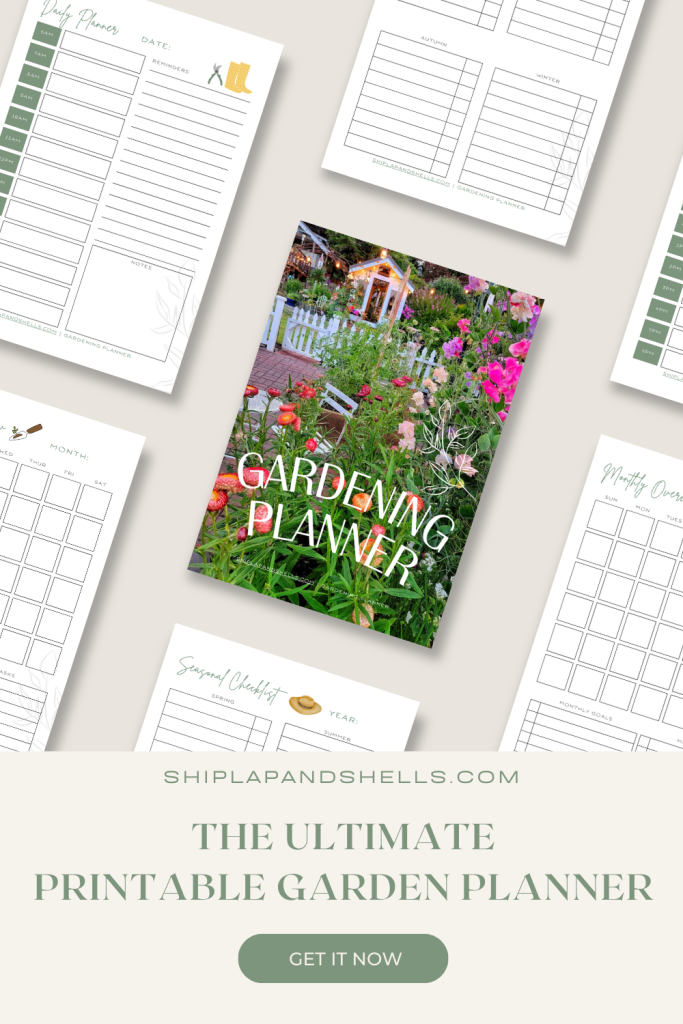
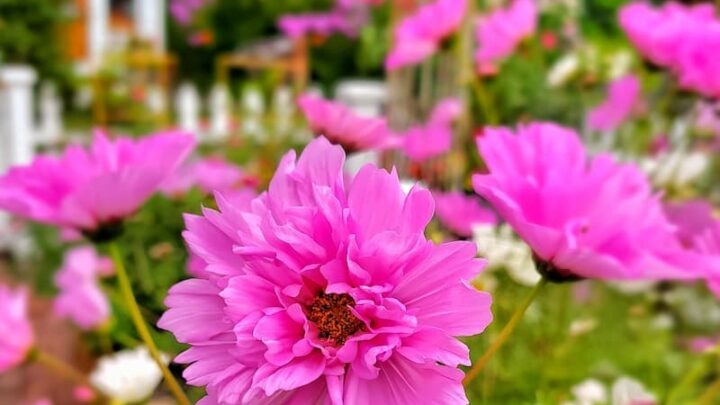
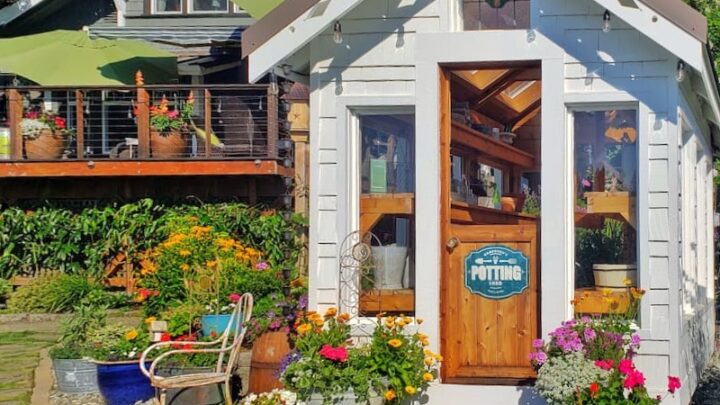
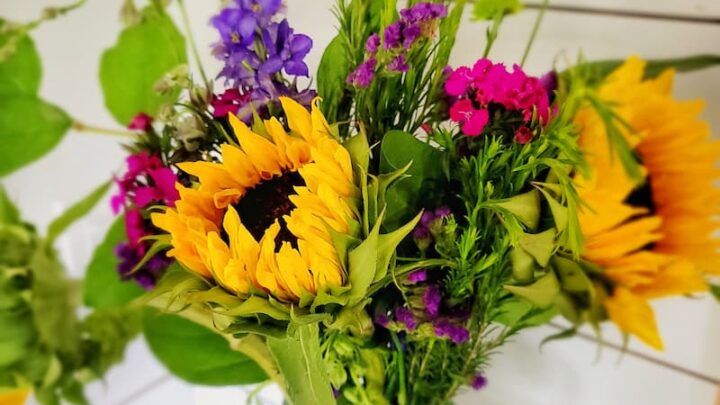
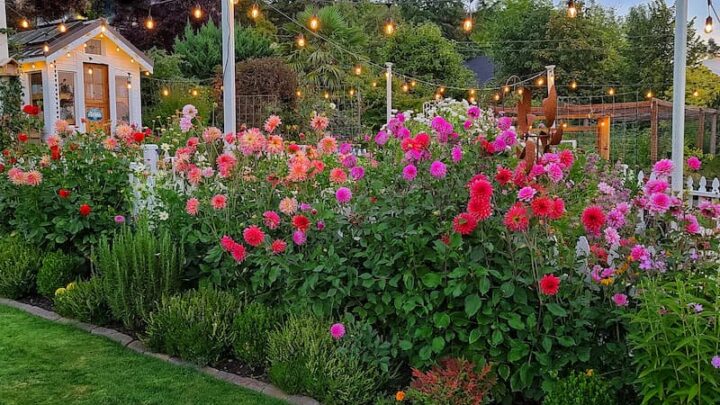
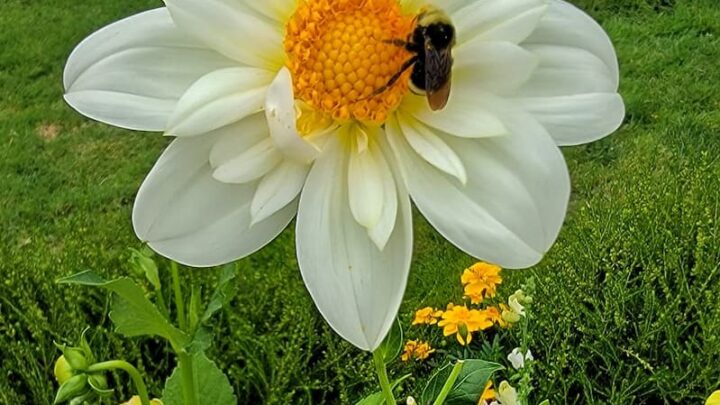
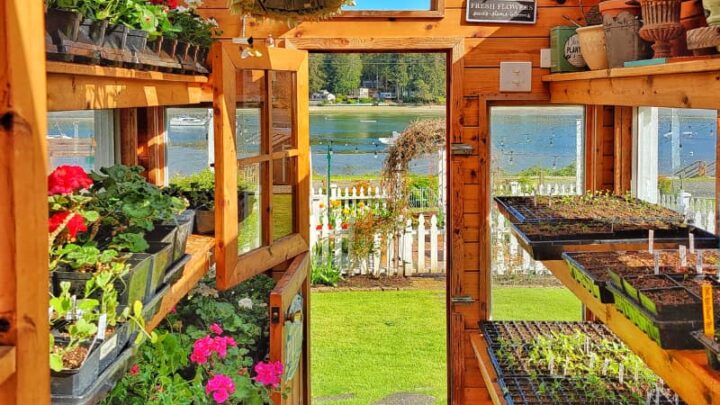
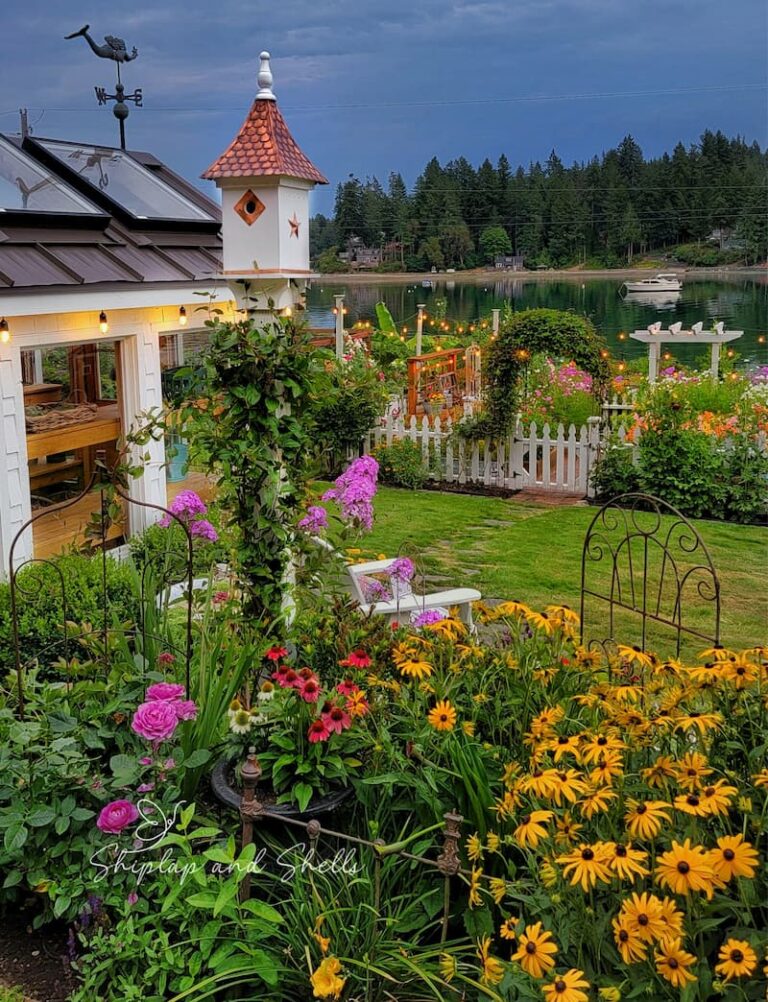
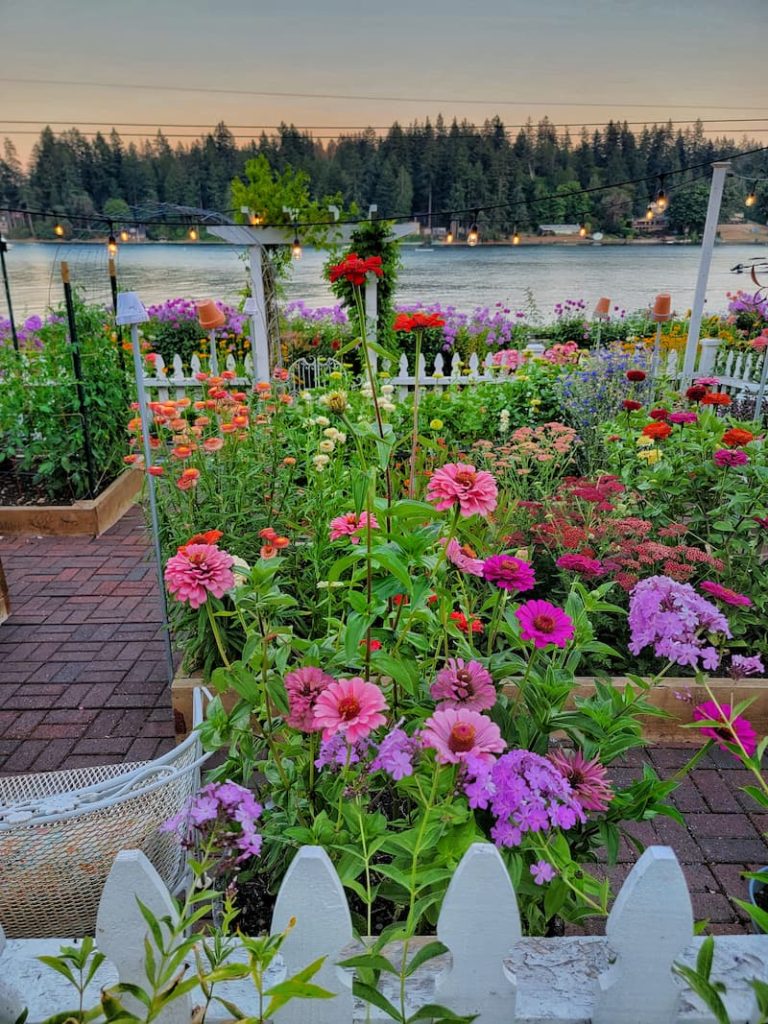

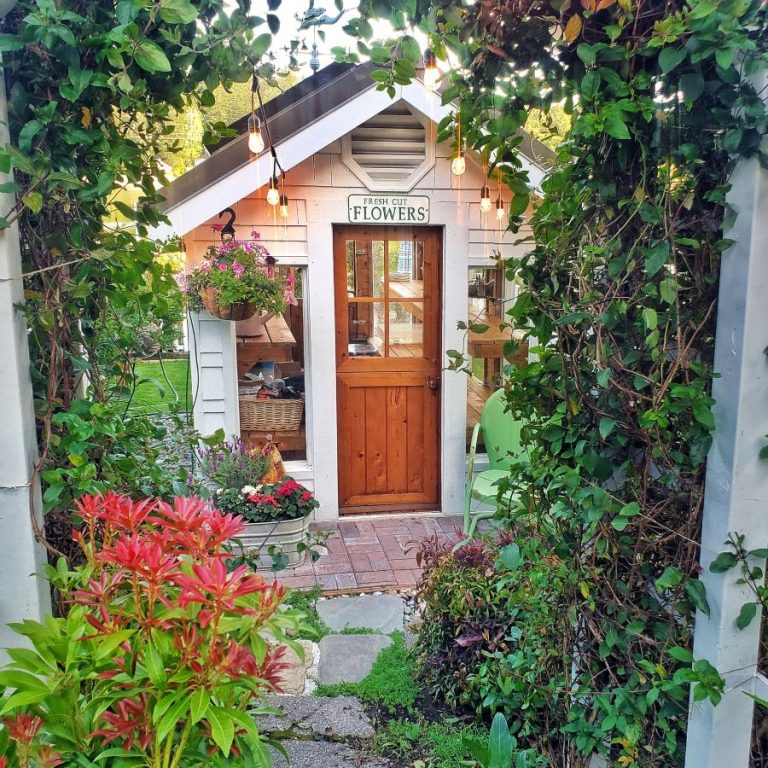
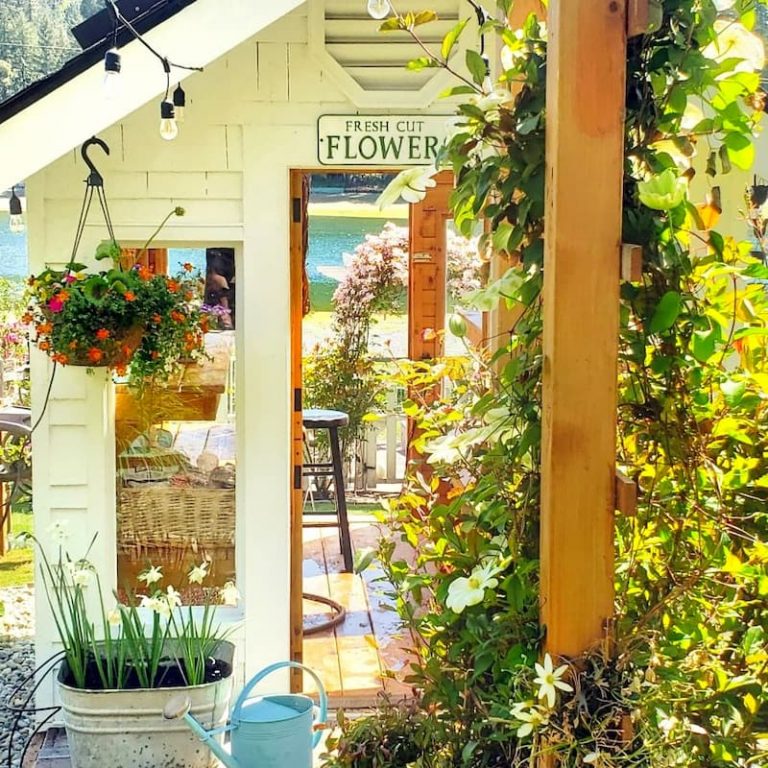
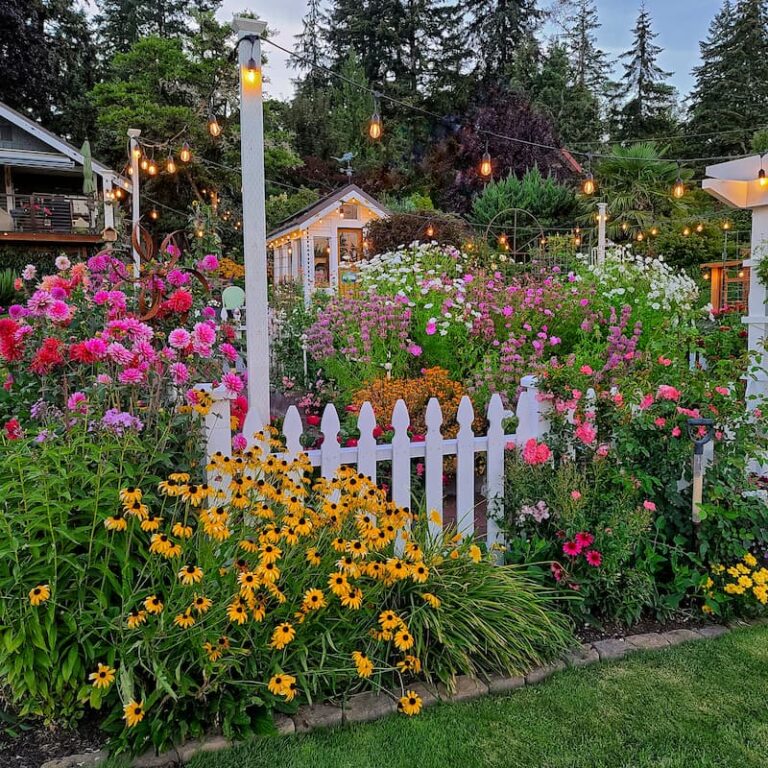
Here in NW Montana deer eat the lilacs. Young deer just learning will much and try about anything. But when older mostly leave the flowers you mentioned alone. This is a good list! Thanks
The deer did not eat my Black-Eyed Susan flowers. But, they did eat all of the green leaves at the bottom. And, the deer did eat all of my Coneflower…flowers. Almost all of the deer resistant flowers (and flowers in general) that I purchased, the deer feasted on like a buffet. Phlox, Coreopsis, Butterfly Bushes, Coral Belles. My 4 expensive Rose Bushes were annihilated! Not one rose left. My new flowerbed looks like a bunch of greenery. They must be really, really hungry. I need to find a non-toxic, safe and effective deer repellent.
I’m so sorry to hear this Brenda. Although there are flowers that are deer resistant, there is no way of ever being 100% accurate because if the deer get hungry enough, they will eat pretty much anything. They ate my roses this year too. I use Liquid Fence every couple of weeks and when I keep it up, my plants are safe. Here is my affiliate link for you to check it out. https://urlgeni.us/amazon/liquidfence2 It does smell awful when you first spray but it’s worth it and pet safe.
This is such a helpful post Kim! I’m sharing it with my followers today for my weekly round up because it will help so many people!
Thank you so much for sharing, Kristin.
I want a large garden but I really don’t want to deal with deer. Want a huge challenge. So glad you provided so many típs for me to learn.
As long as I’m diligent about spraying I don’t have problems. But the minute I forget my flowers are gone.
The deer around here are particularly brazen. They blithely chomp away on my flowers in the middle of the day and won’t run until I’m within 10 feet. Yesterday I watched as one calmly decimated my neighbor’s rose bush!
I’m noticing that too Sandra! It is a particularly bad year. And they are not scared of anything!
I had snapdragons in an unprotected area and as soon as they budded, the deer ate them. Then I moved them to a “safe” area, and the deer got in and ate them again. The greens on snapdragon may be deer-safe, but the buds are definitely not.
Woke up this morning and they’d eaten all the flower buds off my sulfur cosmos.